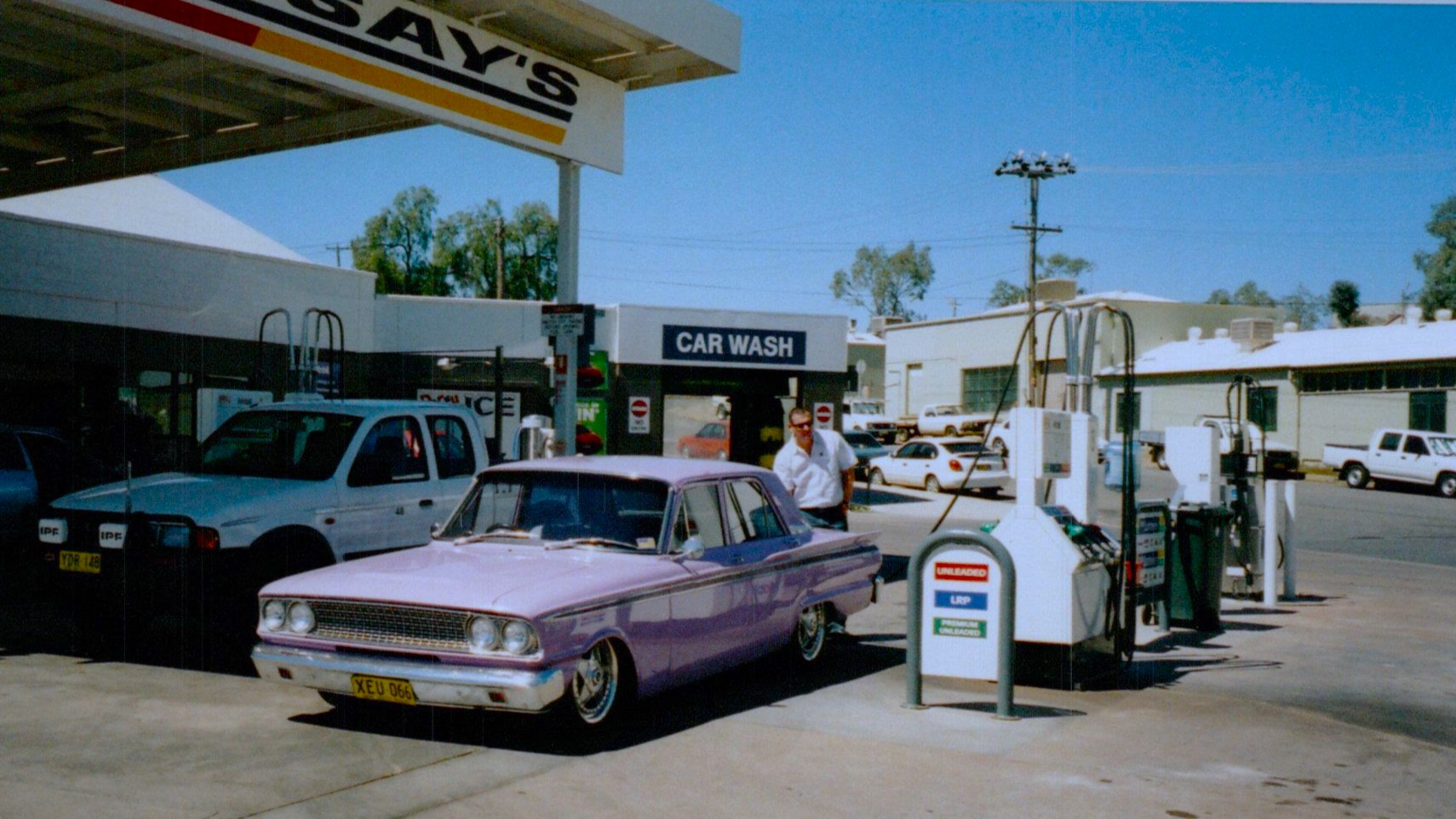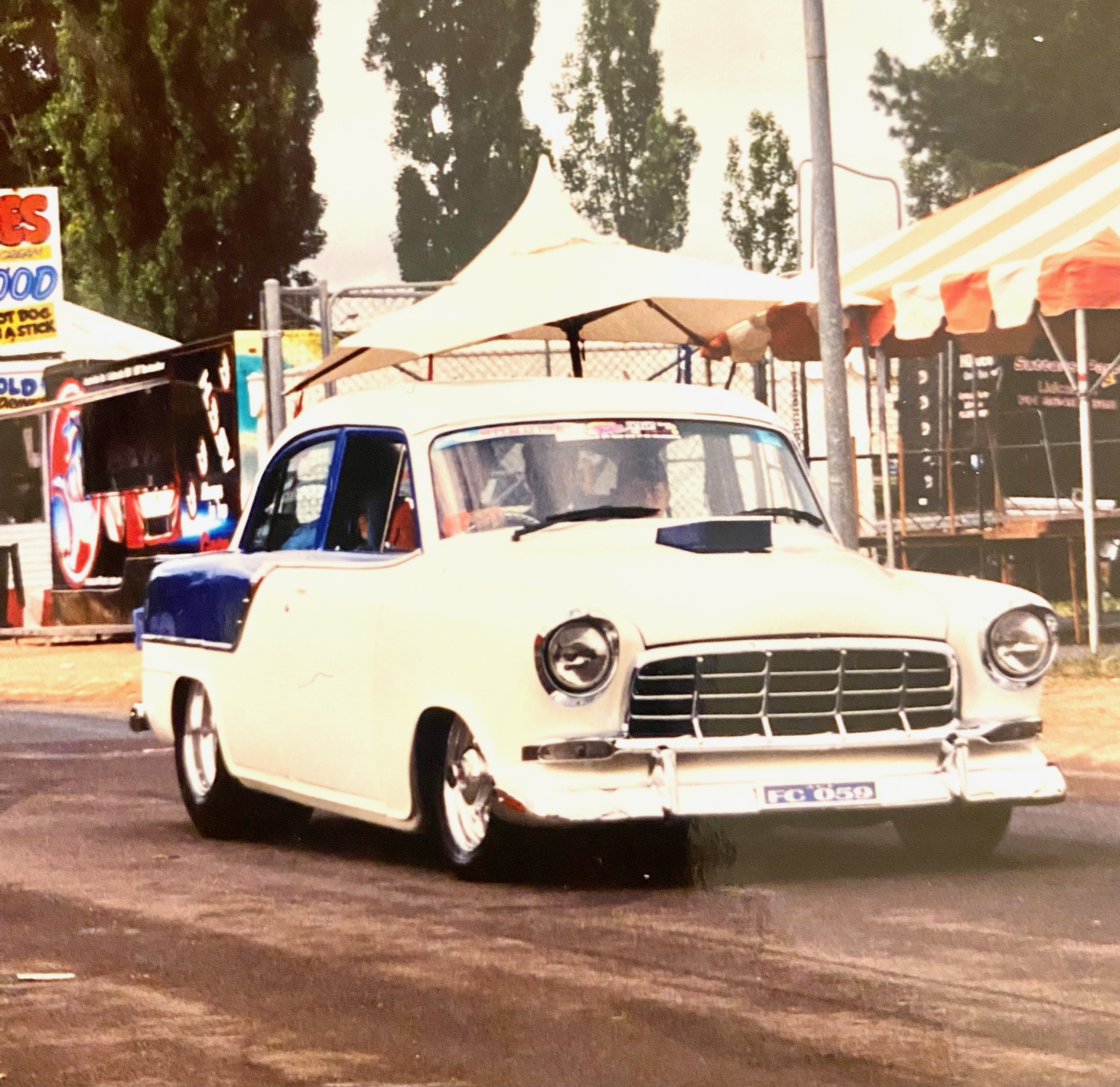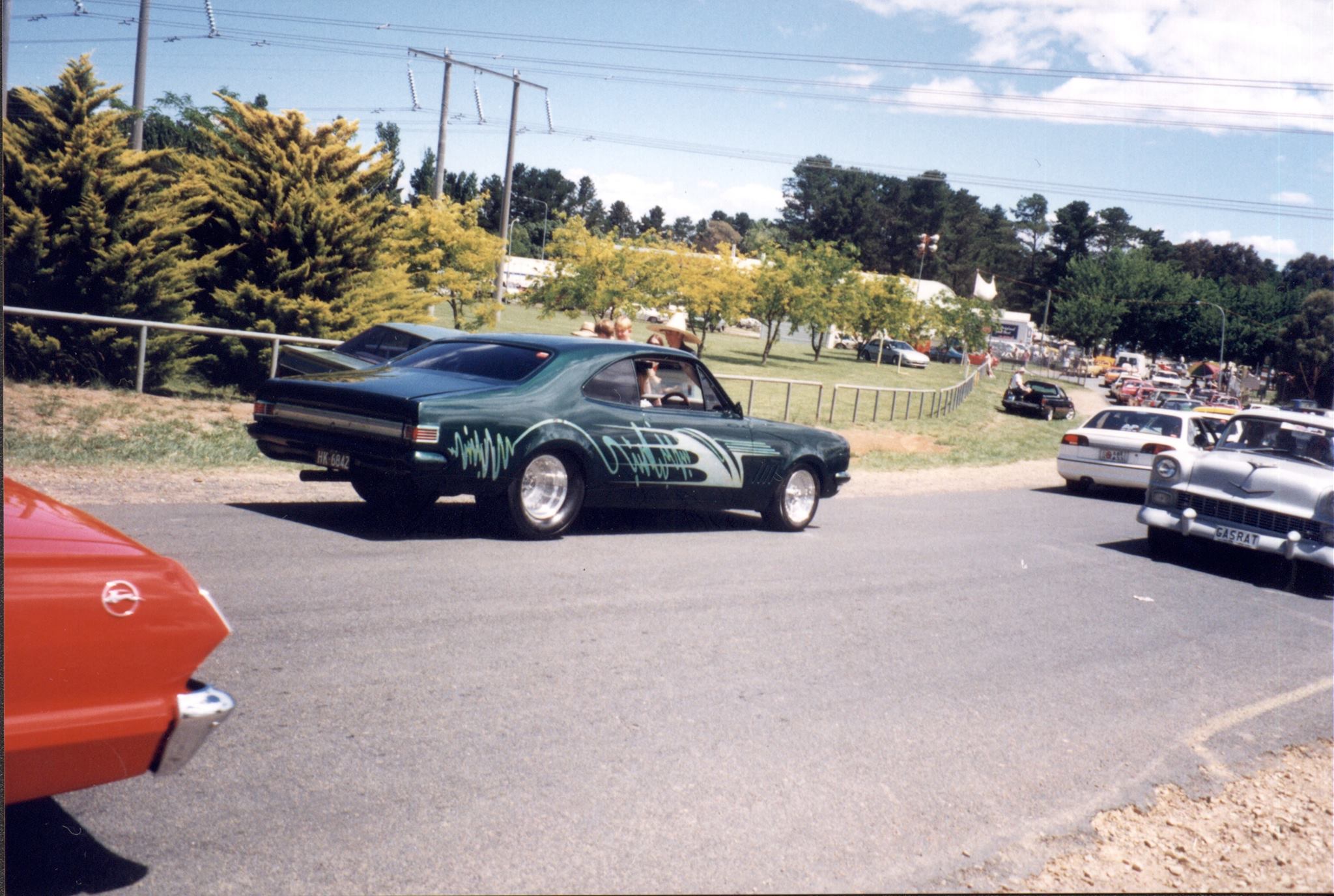Every Street Machine Summernats Grand Champion
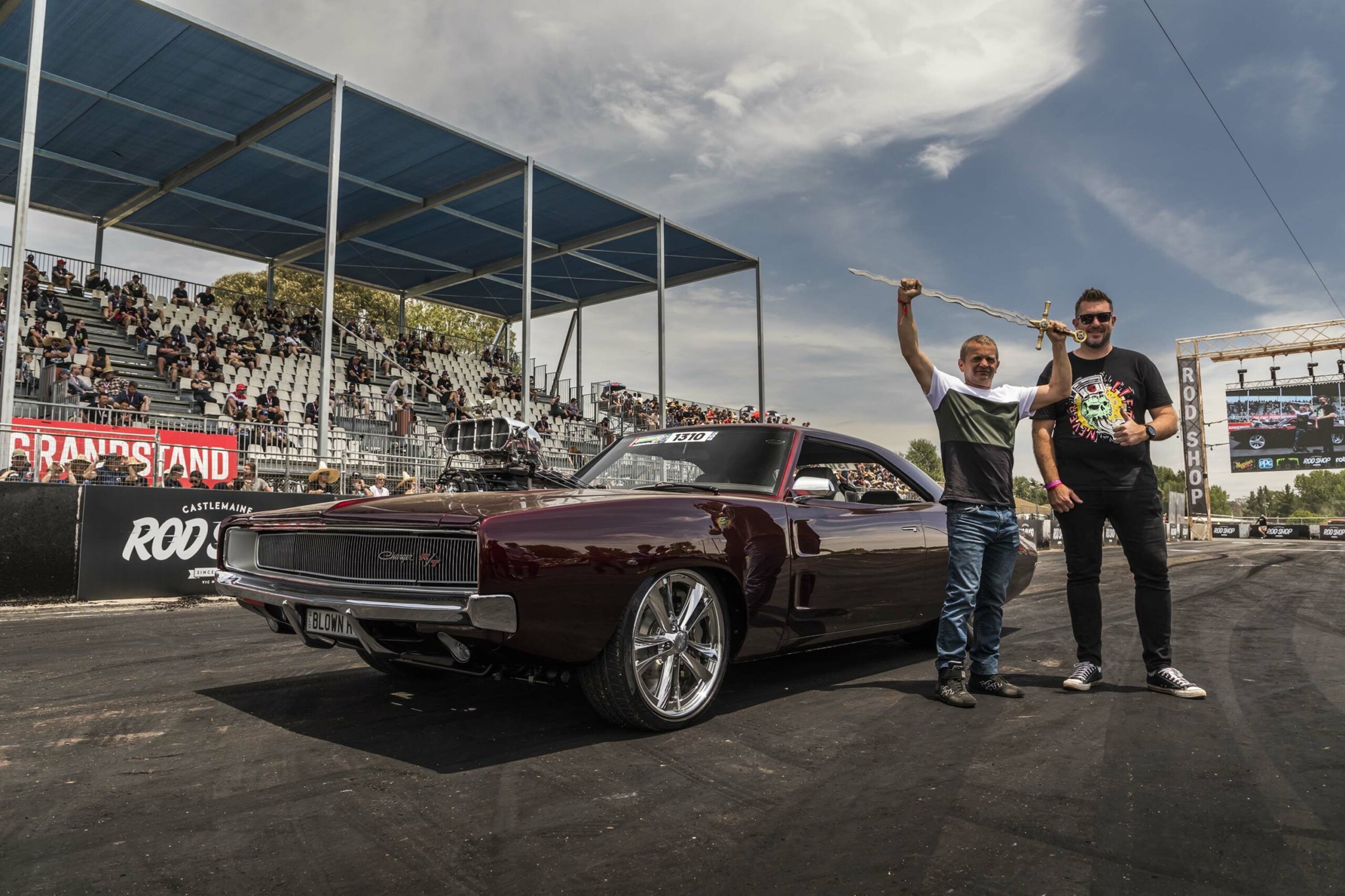
Just like a king being crowned, so too the grand champion winners each year were knighted with the symbol of a grand champion, a sword, being presented by Chic himself. Taking home the victory wasn't a question of luck or just how good of a showpiece the owner had built. A tally of points from the judging categories was combined with people's choice voting and points from the tricky driving events to really make the drivers work for it.
Winning Summernats Grand Champion remains the pinnacle award in the street machining scene and is recognised globally as the mark of not just a brilliant car build but also of a functional, driveable car that people would love to own themselves. You can check out the list of previous winning cars below, but there’s no better place to experience Summernats than in person. Tickets sold out last year, so head to the website and grab yours before they’re gone.
Summernats 36 - Grand Champion Joe Bauer
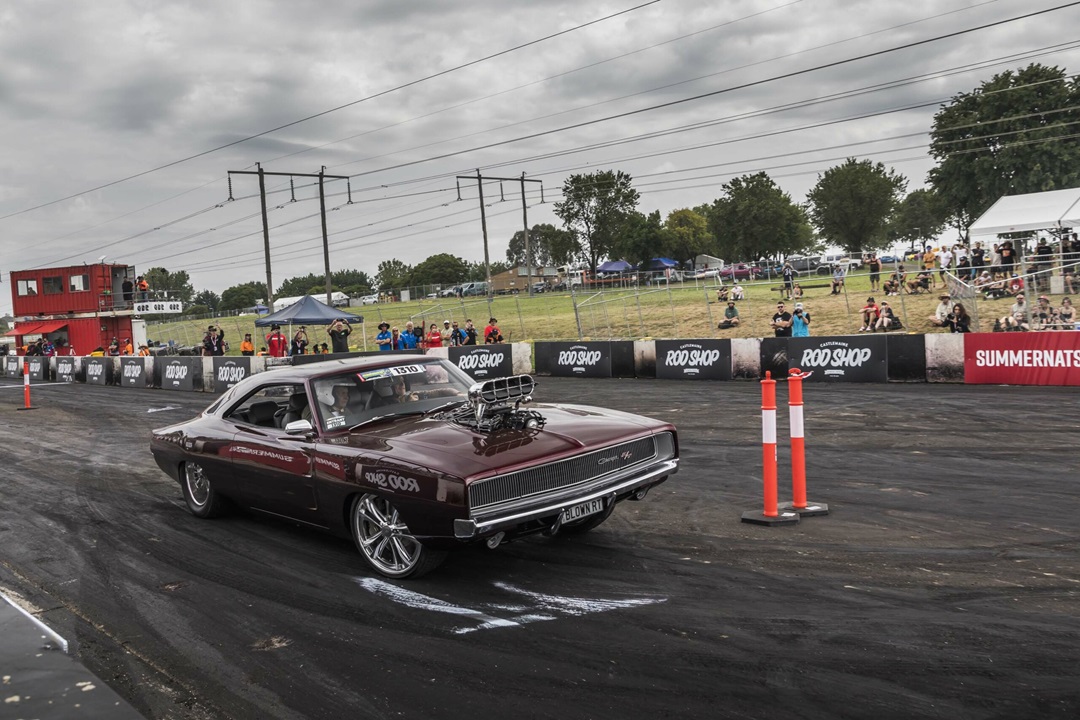
*Image credit: Street Machine
The Street Machine Summernats Grand Champion 36 award is highly sought after, requiring a car that excels in build quality, popularity, and performance. Competitors must impress judges, win public favour, and demonstrate the car's functionality in events like Go-to-Whoa and Slalom.
Summernats 36 showcased a range of impressive vehicles. Joe Bauer's Dodge 3000hp 1968 Dodge Charger and Zoran Krstevski's XE Falcon stood out, alongside Dan Morton's FORGED XY Falcon, a standout in Australian custom car building.
FORGED dominated the judging categories, including Top Judged Elite, while the 1968 Charger was a favourite for People's Choice. The driving events often play a decisive role. Dean Rickard's HT Monaro showed impressive skill in Go-to-Whoa, followed by Joe Bauer's strong performance with his Charger.
Despite some challenges in the Go-to-Whoa, FORGED missed the Slalom, leaving space for Steven Alldrick's XR Falcon ute and Bauer's Charger to showcase their capabilities.
In the end, Joe Bauer with BLOWN RT clinched the Grand Champion title. Bauer expressed his excitement, especially for winning People's Choice, acknowledging his fondness for high-horsepower cars and his willingness to push them to their limits.
1988: 1. Rob Beauchamp
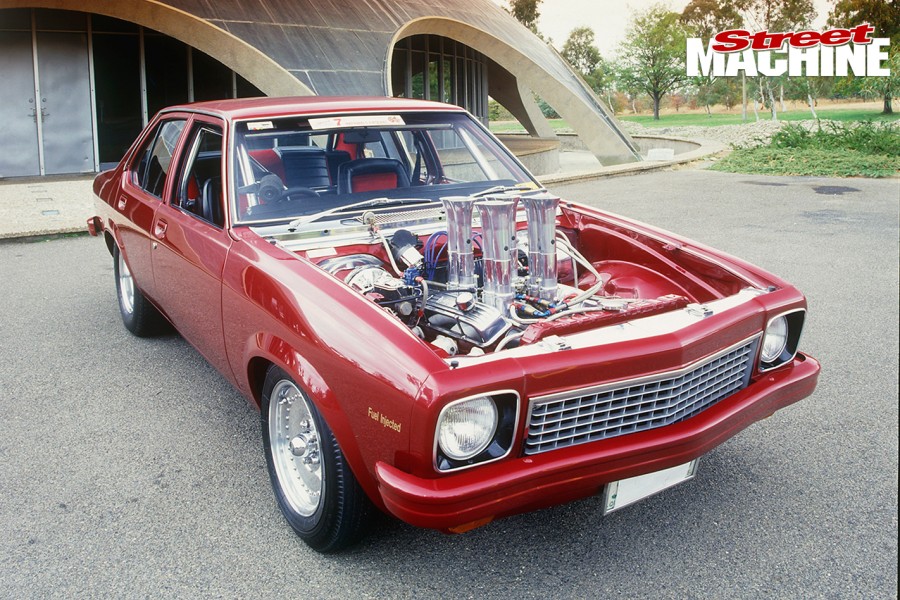
The first-ever winner was Rob Beauchamp in his metallic burgundy LX Torana – difficult to miss with its polished trumpets hanging out of the bonnet. The engine combo started with a 350 Chev and carburettor, but by the time he’d won Summernats Rob had fitted injection. One of the first cars to have a full chassis with big tubs but built to an elite standard. This LX was the start of the new era of builds and set the bar high for the following year.
1989: 2. Rob Beauchamp
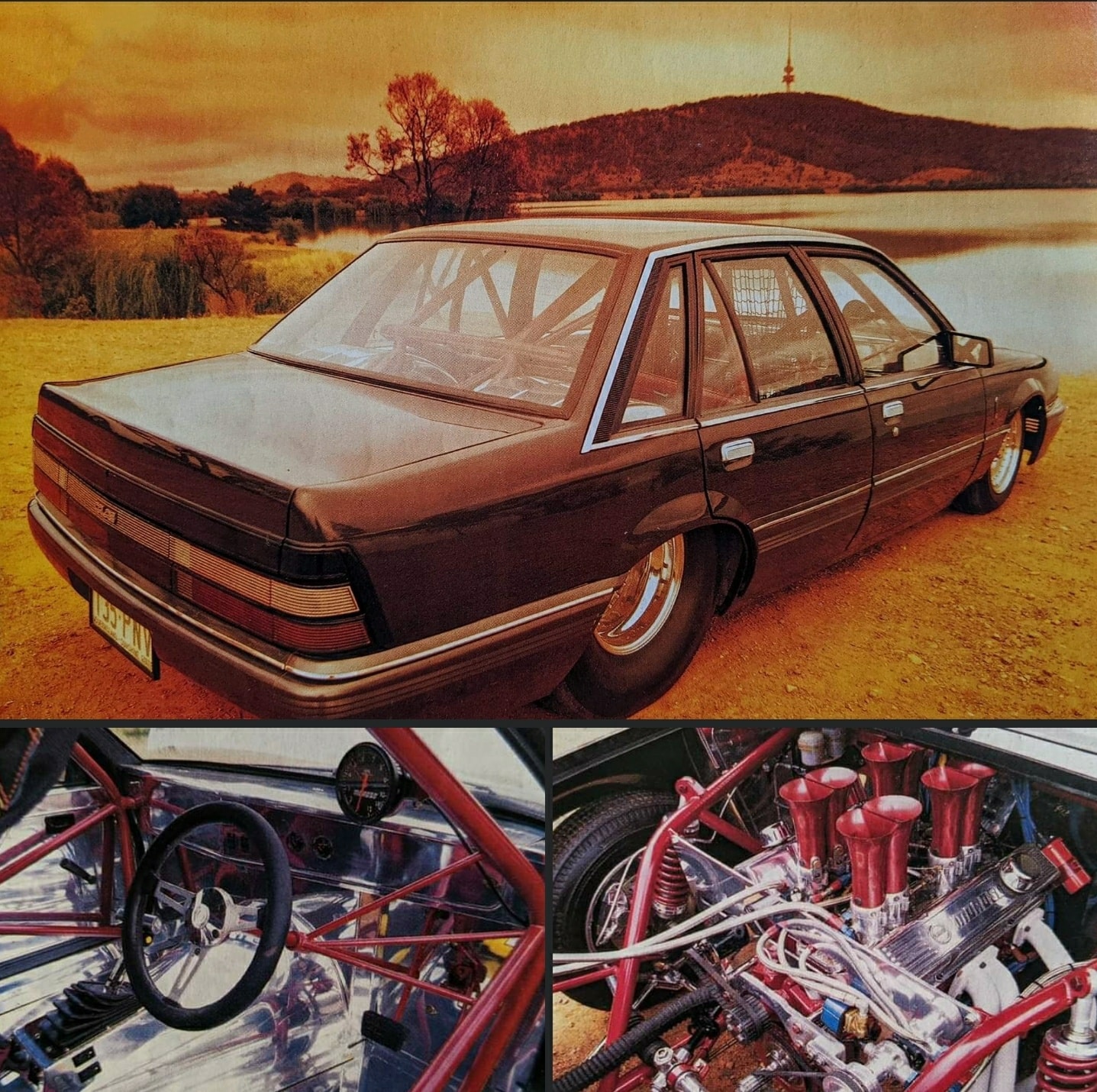
After winning the first Summernats Grand Champion, Rob thought, "I can't come back with the same car," so he bought a brand new VL body shell, added a full chassis, tubs, cage, and painted it metallic grey. He ran the same engine combo from the LX, an injected 350 Chev, a Turbo 350 trans with TCI internals, and a 9in rear end. All the chassis and fabrication was done by Bill Jones, the go-to race car builder at the time. Another real feature was the polished aluminium interior by Col Chapman. There was an unbelievable amount of work with rounded, welded tubs and door trims. Rob won numerous awards, including top interior, which made it the subject of some discussion as it didn't have leather trim anywhere to be seen.
1990: 3. Rob Beauchamp
.jpeg?1688691944688)
Rob returned in 1990 with the same VL, but it was now in two-tone burgundy paint. He fitted a 302 injected small block and fitted an aluminium wing as when this event was over, he was going racing. The car judged well as usual, but Rob did exceptionally well in the driving events, winning the spear a spud and motorkhana. True to his word, Rob then went racing. And while he has built other cars since, nothing changed the scene quite like his first two cars.
1991: 4. Howard Astill
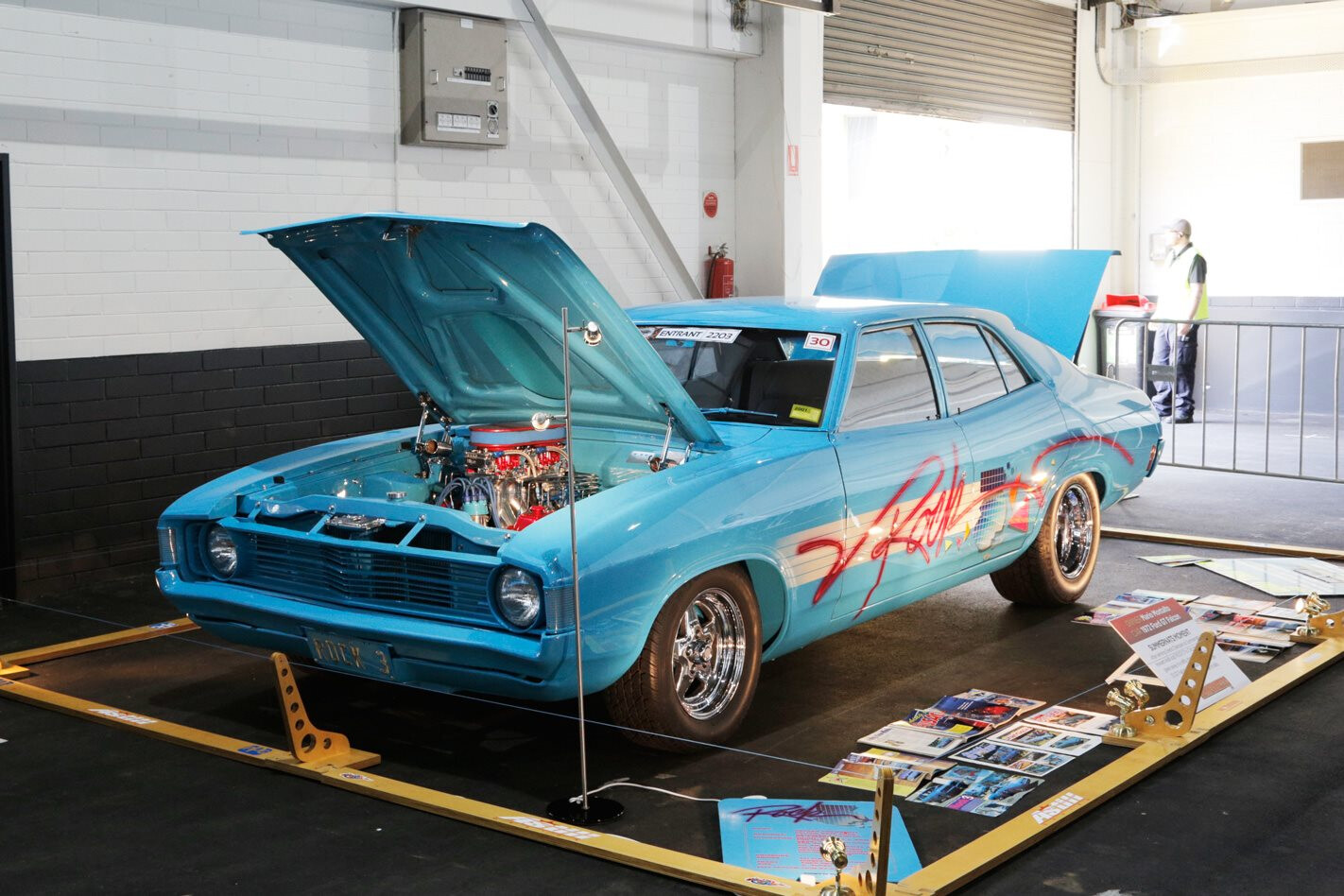
The third evolution of ‘Rock’ was the undisputed king at Summernats 4 taking out Top Judged and the Grand Champion award. Howard Astill's retro-styled aqua blue 1972 XA Sedan with its tunnel-rammed 351 was a massively popular choice, even among many of the Holden faithful. Neon graphics by Ralfus were a huge statement piece for its time. Rock 3 was a purpose-built show car with Howard doing everything he’d always wanted to. Chic Henry purchased Rock 3 from Howard and raffled it off to a lucky punter that year. Howard had to do a fair amount of work making the car legal, and Mario Montalto was that lucky guy. At just 18, Mario walked away with the Grand Champion winner and still owns it to this day. It was last spotted in the Top 60 Hall at Summernats 30. Read our recent post on titled: Inside Astill Design.
1992: 5. Howard Astill
Howard Astill was on a roll coming straight off the back of winning the previous year, carrying that momentum into Summernats 5 with his next creation. Howard was the first real professional builder, earning contracts with companies for sponsorship and delivering top-shelf cars. Running a brand new injected five-litre and matching ‘box out of an EB Falcon that hadn’t yet been released to the public, the compact Fairlane debuted after its nine-month build. Rock 4 was a purpose-built show car, sponsored by Street Machine magazine to raffle off to a lucky winner after a year of showing around Australia. Howard ended up buying the car back in the years that followed and drove it from Broken Hill to Summernats 17!
1993: 6. Peter Fitzpatrick
Peter Fitzpatrick's two-toned white and blue 1959 FC Holden started off as your normal daily driver, serving duty as the family car and even bringing the kids home from the hospital. Fitzy built this car to win Summernats, running a tunnel-rammed 327 into a 4-speed Muncie ‘box and a 9in rear end. The car judged well and drove even better, taking out his first of 6 Grand Champion wins.
1994: 7. Brian and Janelle Willis
Brian and Janelle Willis’ 1968 HK Monaro was built, not bought. This was the benchmark car of its time and detailed from top to bottom. The grunt came from a mild 350 small block with Fuellie heads paired with a Turbo 400 and 9in diff. The chassis was fabricated with a tubbed rear end and an incredible engine bay – the first of its style. The interior was also cutting-edge with a roll cage meaning business for the driving events. The exterior stood out with metallic green and custom graphics painted by Owen Webb. After winning Grand Champ that year, Brian went on to take out Top 10 for the following 7 years running – a true testament to the quality of this elite-level build.
1995: 8. Dennis Laing
Dennis Laing's 1964 Ford Galaxie was a cool, old-school pro-street build in its custom Glasurit Purple and iconic graphics that were matched in the interior, too. It was powered by a 460ci Ford big block with twin Holley 850s and a Pink 6/71 GMC blower, and backed by a Ford C6 and 9in. Everything about this build was colour-coordinated and quirky, from the underside to the bonnet that opens to the left. Considering this used to be a three-on-the-tree left-hand drive with a 290ci motor, he rocked up that year and really blew the competition away. One and done for Dennis as the car never returned.
1996: 9. Peter Fitzpatrick
The FC hadn't changed since 1993, but Fitzy said to Chic that the last few winners never really gave it much in the driving events, so Chic told him to enter again and "go for it." He did and managed to take the win again.
1997: 10. Howard Astill
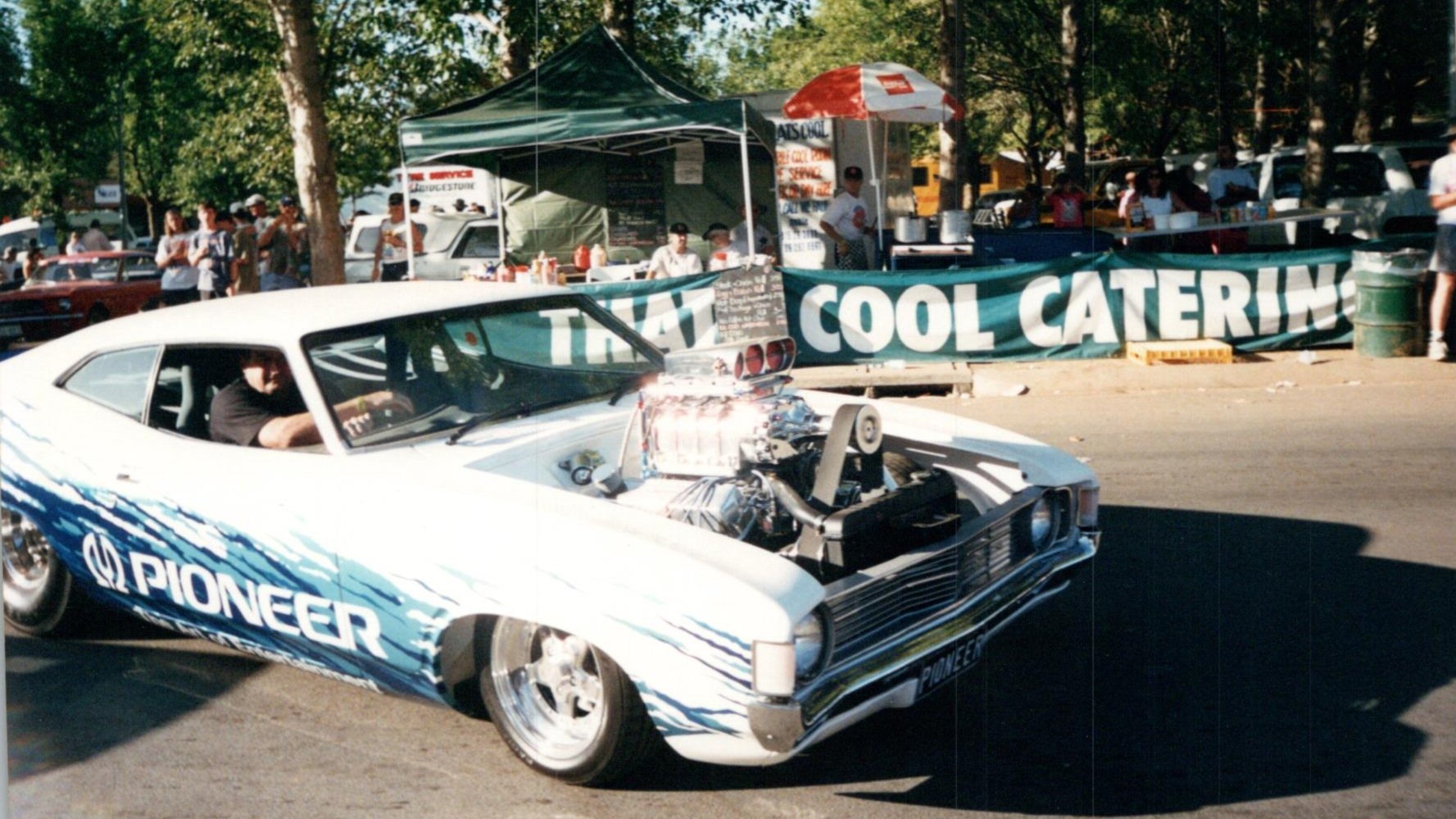
For Summernats 10, Howard’s XC coupe had been converted back to an XA and sponsored by automotive electronics company 'Pioneer'. The Coupe ran a 460 big block, 8/71 blower, electronic fuel injection (including the computer from a V8 Supercar), and a Powerglide trans’ into a 9in rear end. It had a fabricated chassis firewall and floor, and the whole car was built around the running gear, before being painted white with wild 3-tone blue graphics added last. After sorting the engine, he topped the awards and performed well in the driving events, taking out Grand Champion for the 3rd time.
1998: 11. Peter Fitzpatrick (same car)
Fitzy was back again in ’98 doing Fitzy things – taking out the top gong at Summernats and wheeling his FC like he’d stolen it.
1999: 12. Peter Fitzpatrick
After finishing the Go Whoa, Fitzy drove through some fluid on the track and hit the wall. While his time was enough to help his record-breaking fourth Grand Champion victory, the damage to the front end was significant and was the impetus for a substantial rebuild.
2000: 13. Shane Burcher
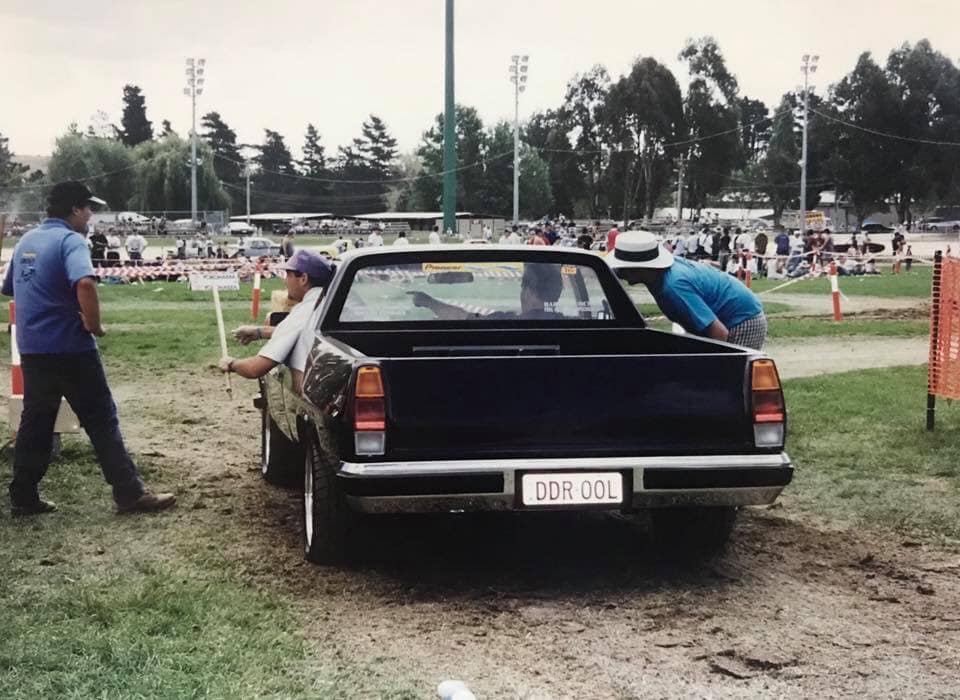
Shane Burcher from Orange in NSW took out the 13th Summernats in his Holden WB style-side ute 'DDROOL'. It had a Caprice front and was a dark metallic purple with loads of polished chrome including the engine bay. The highly polished donk was a fuel-injected 215kW VN 5-litre, backed by a TH350 and a ten-bolt rear. The tubbed rear end was covered with a stunning flat floor tray, and the body lines on the build were just about perfect. The interior featured custom cream suede with a one-piece roof lining – the perfect chariot for the spear-a-spud event!
2001: 14. Anthony Fabris
Anthony Fabris' 1955 Chevy was considered the best '55 in the country at the time. The stunning two-toned turquoise/white mix made it stand out from the rest. Anthony is no stranger to building elite-level cars that drive as good as they look, and the attention to detail on this build was next level, especially for a car with such big panels. It ran an injected 502 with a Turbo 400 and a 9in rear, allowing Anthony to drive it like a bat outta hell and take the win.
2002: 15. Peter Fitzpatrick
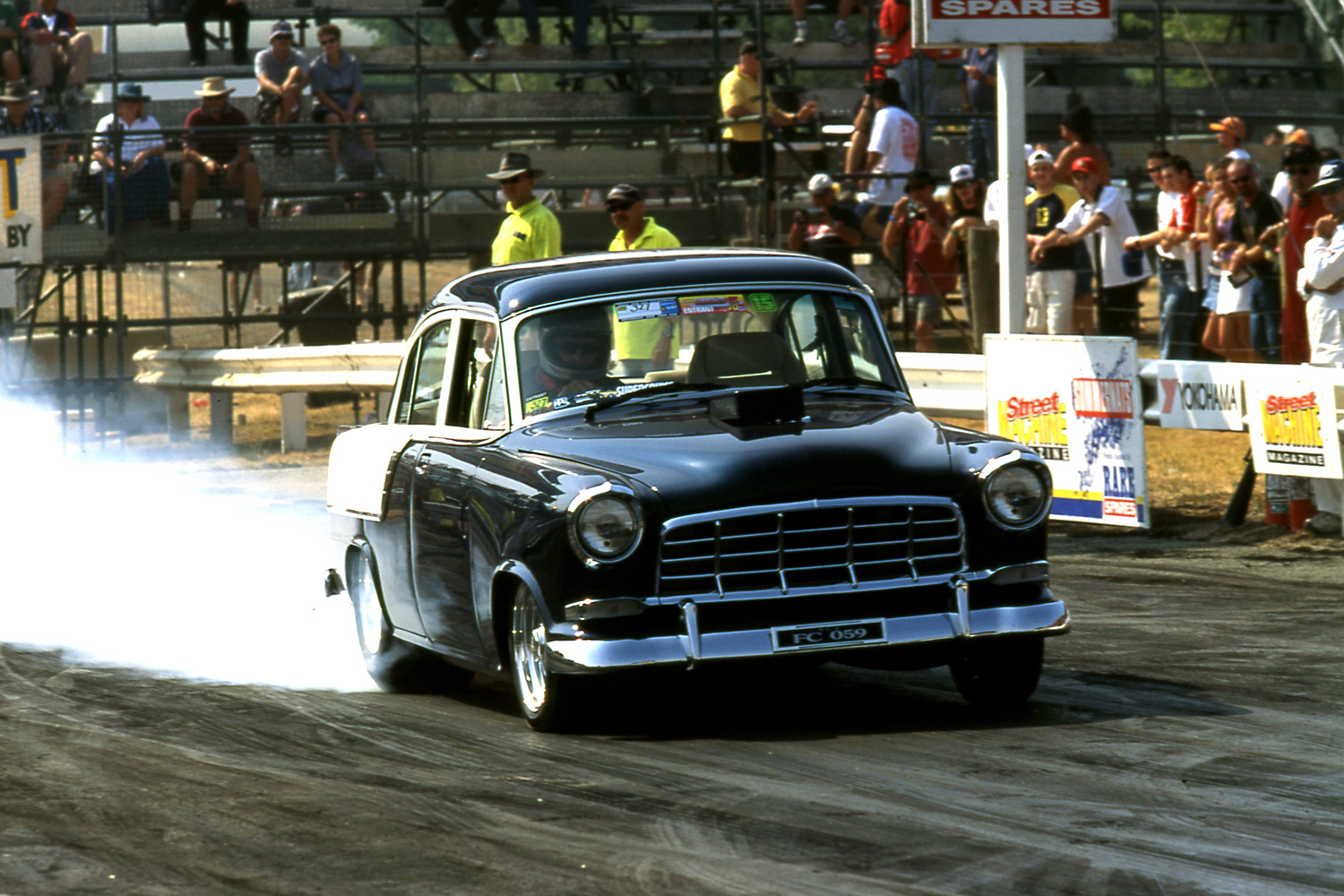
Peter used his crash from three years earlier as the perfect excuse to give the FC a major revamp. The car returned with a fresh House of Kolor two-tone Oriental Blue and pearl white paint job with an interior update in vanilla ice leather with Nissan 300Z-based seats. Under the hood, it had the grunt of a 327ci Chev V8 and a Muncie four-speed gearbox. After several years of competing and being almost unbeatable in the driving events, Fitzy romped home with the Grand Champion Sword again in the new livery.
2003: 16. Mark Course
With the rules relaxed to allow hot rods to compete, Mark’s was the first to win the coveted Grand Champion sword. The switchboard orange 1932 five-window Ford Coupe was powered by a blown 350 backed with a TH350 and a fabricated 9in diff. This little rocket was built to the highest standard anyone had ever seen in a hot rod at the time, showcasing a stunning leather biscuit cream interior. On the day, it was an epic battle against two previous Grand Champ winners, Fabris and Fitzy. It was a deserving win but caused some controversy in the Street Machine world.
2004: 17. Drago Ostric
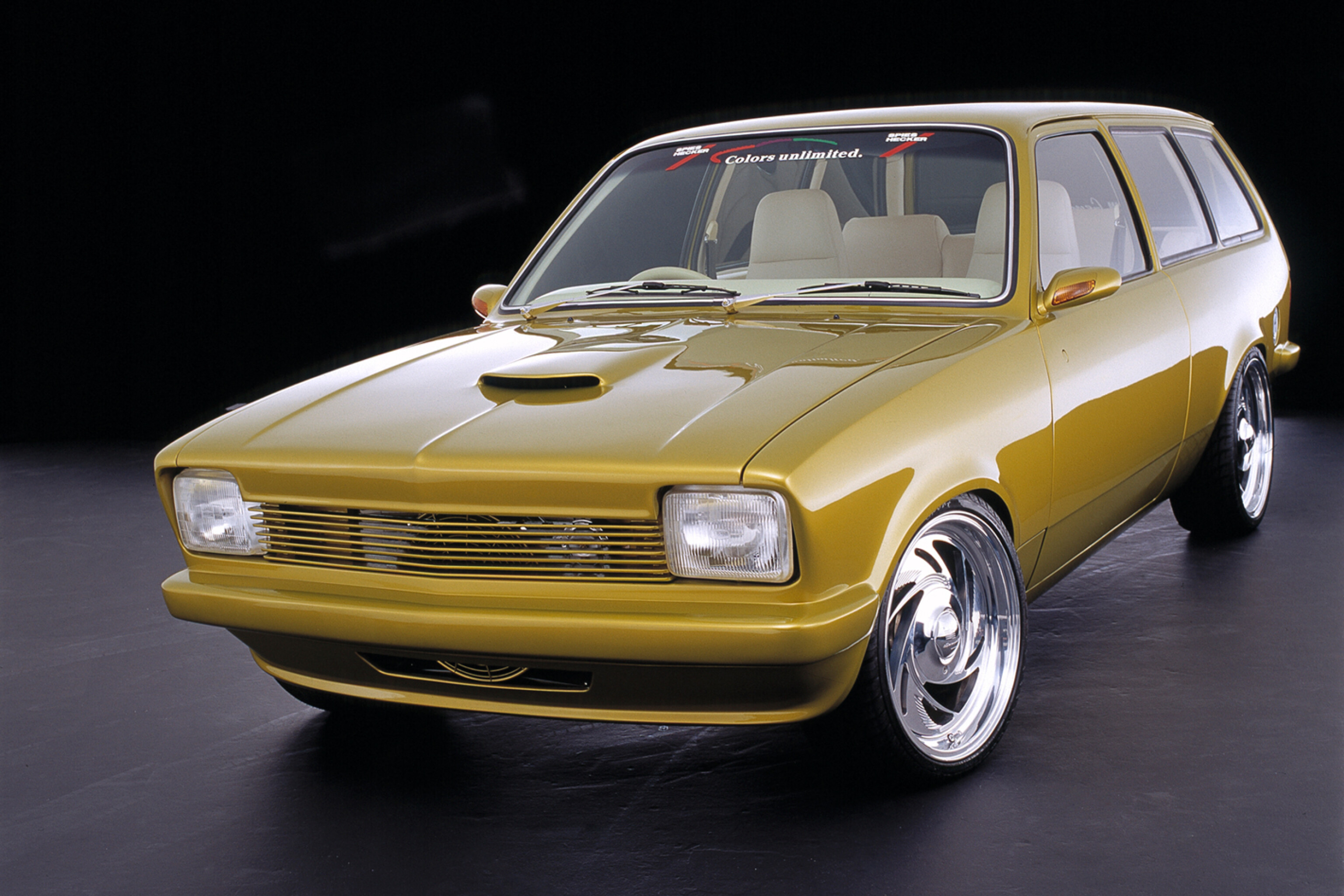
Drago Ostric's sick Gemini wagon was painted in a House of Kolor Green and was the first four-cylinder to take out Grand Champ. A year earlier when the car was gold, he went for Grand Champ and secured a spot in the top 10 and won the People's Choice award. Over the next 12 months every aspect of this masterpiece was transformed. The car changed to green, underwent a complete rebuild, and retained its suicide doors and removable front clip showcasing the fully detailed engine bay. It was powered by a 2.4 Rodeo engine that was injected and supercharged, twin intercooled, and produced over 400hp at the rear. Weighing only 900kg, it drove like a go-kart. The car was engineered for the driving events, making it a remarkable achievement for a four-cylinder build.
2005: 18. Gary Myers/Dave Ritchie
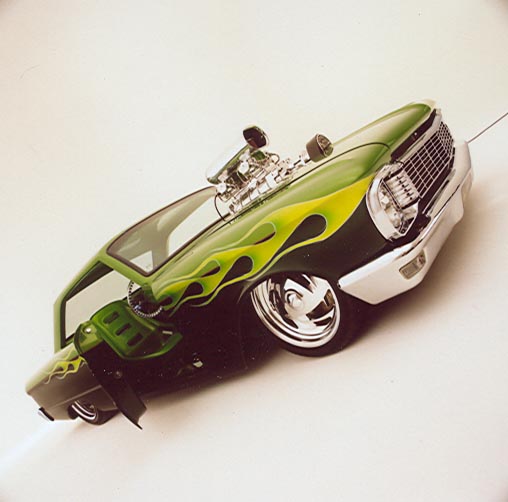
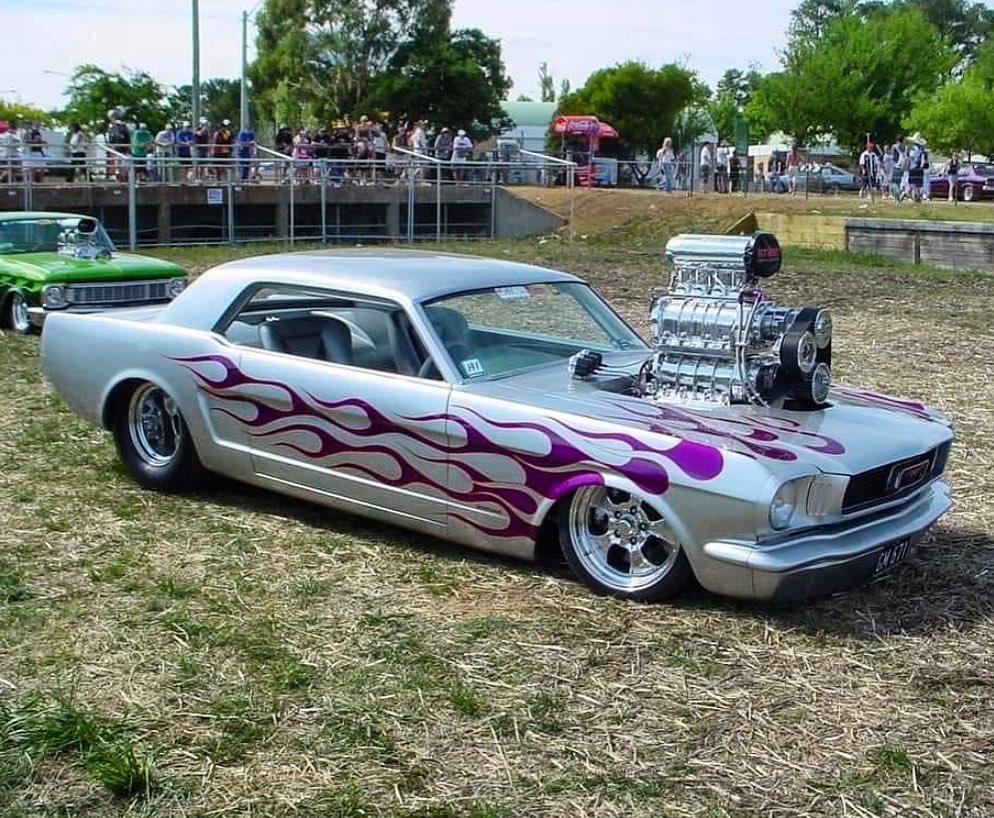
This year witnessed one of the toughest battles for Grand Champion ever seen, with Gary Myers in the Silver Bullet and Dave Ritchie in his XP Ford coupe going head-to-head. Gary's Mustang ran a Hemi with a twin-blown setup in House of Kolor Silver with Purple Marbleised flames, while Dave's XP featured a Troy Hillier-built 351 Windsor with a C4 transmission and a 9in rear in a House of Kolor Kustom Green Gold mix with flames flowing throughout the entire car. After judging points and driving events, both cars finished with the same points. In an unprecedented move, Chic decided to have a head-to-head drive-off, where the competitors ran identical times once again. This historic event resulted in two worthy winners being awarded Grand Champion, making it an unforgettable race to the finish.
2006: 19. Aaron Fitzpatrick
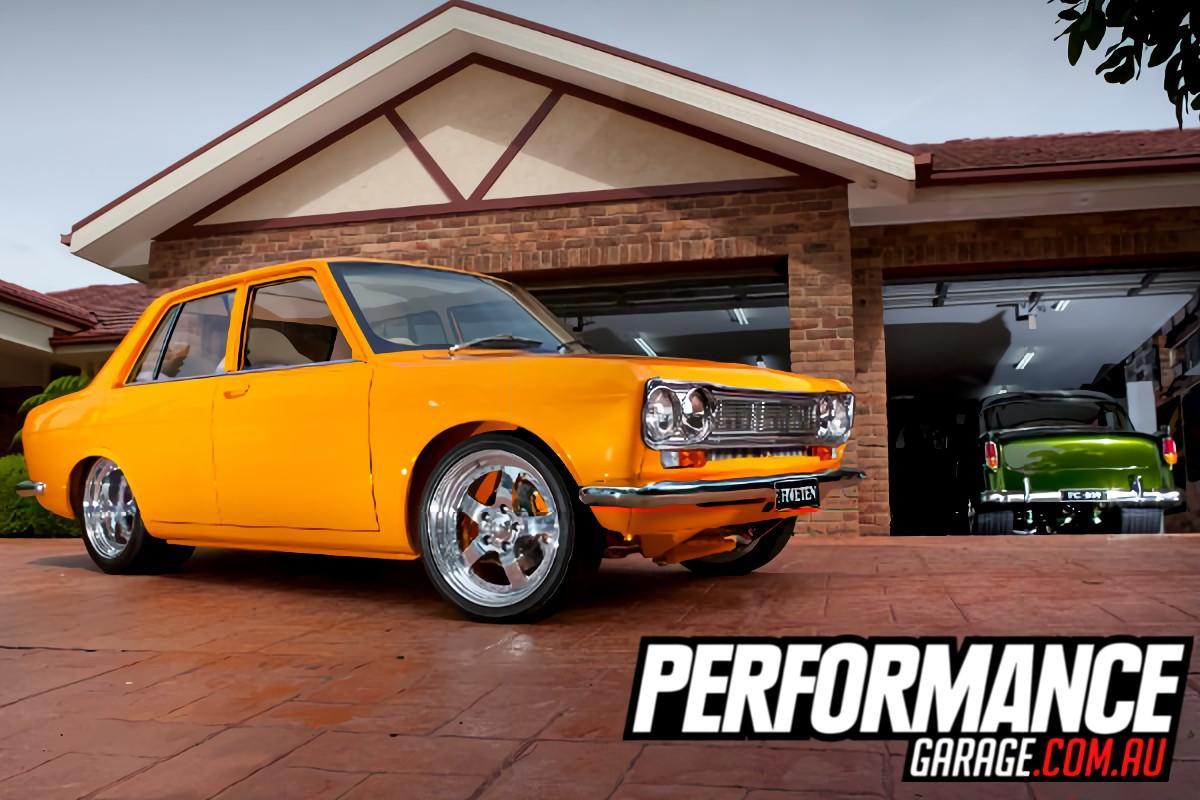
Following in his father's footsteps, Aaron Fitzpatrick, son of the now legendary Peter Fitzpatrick, arrived at Summernats in his 1968 Datsun 1600. This custom House of Kolor mix called 'Clover Plum' featured a heavily ported 500hp Turbo Nissan FJ20 2-litre engine running on E85 and Methanol. The Datsun was built to super-elite standards after it was damaged by Aaron's brother. What better way to test drive a car for the first time than at the Grand Champ challenges! At just 19 years old, Aaron took home the 19th Summernats title, with the Fitzpatrick family by his side. He became the youngest champion, achieving a remarkable feat at his first show.
2007: 20. Zoltan Bodo
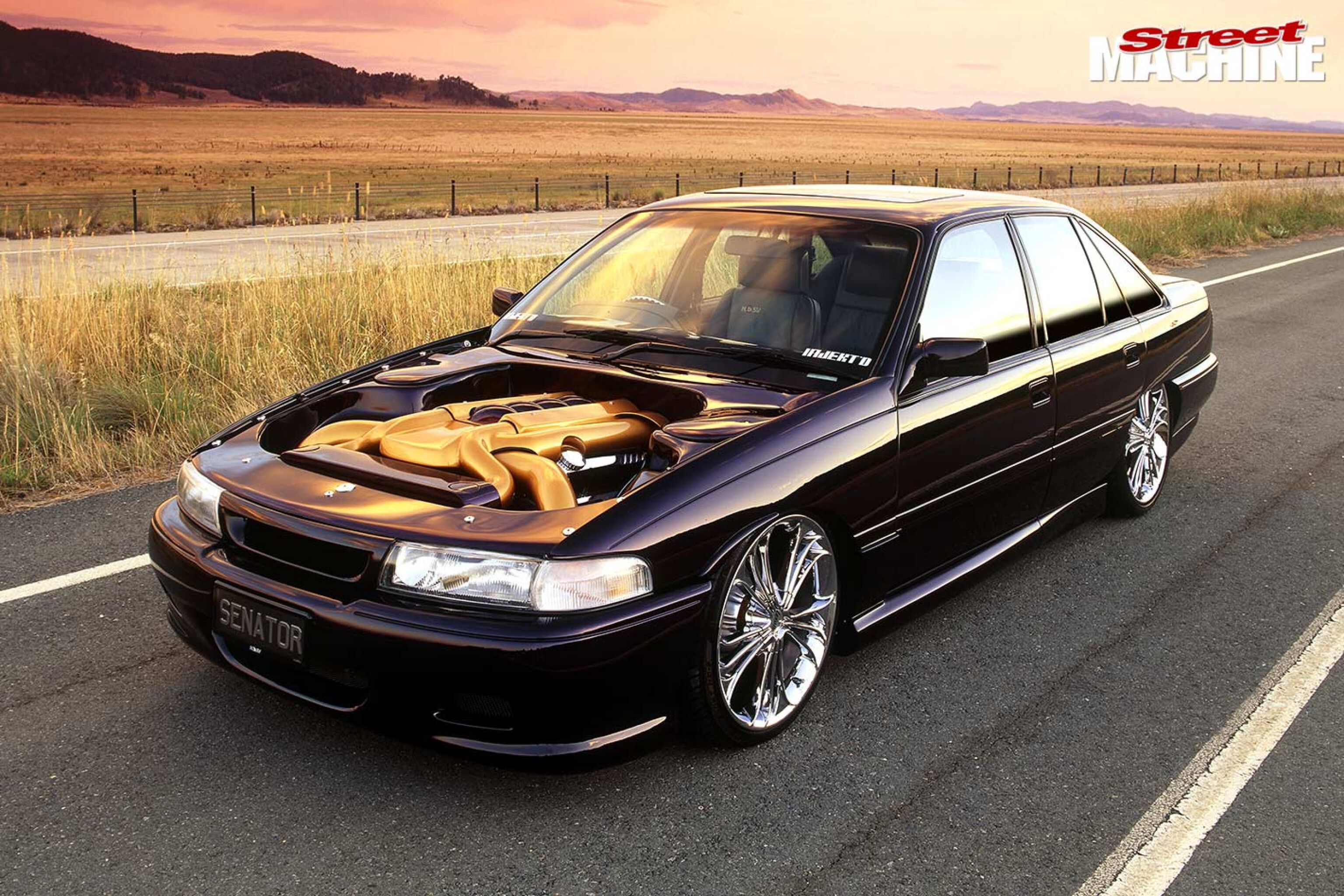
Zoltan Bodo, a newcomer to the Summernats show circuit, showcased his VP HSV Senator with a ported 5-litre engine. The engine bay featured a custom engine cover and extensive metal fabrication, which was truly impressive. The body was coated in House of Kolor Burple over a Gamma Gold base, and the undercarriage was highly detailed with a moulded false floor. The car's impact and stance were enhanced by the airbag suspension, smoothed exterior panels, and fitted body kit. It sat on a set of 20in Lexani Crystals, completing the stunning look.
2008: 21. Rob Godfrey
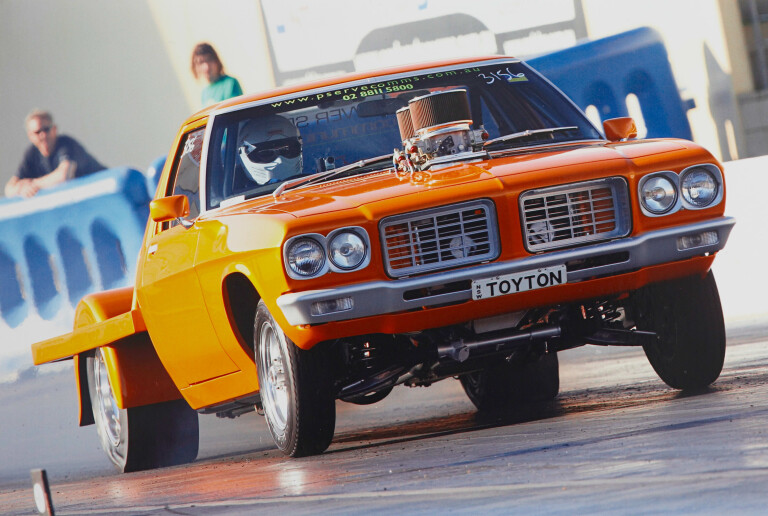
Rob Godfrey's HQ one-tonner, named 'TOYTON,' was a remarkable build that turned heads. Initially serving as Rob's work vehicle, it underwent a complete transformation and emerged with a stunning House of Kolor Sunset Pearl paint job. Under the hood, it featured a powerful blown 502 big block engine capable of running an impressive 8.8-second pass on the quarter mile. Rob fabricated one of the best engine bays seen in an HQ at that time, lowering the engine to accommodate the setup. Utilizing every aspect of the car to his advantage, Rob dominated the driving events. After winning the sword, he took the car to the dyno and achieved a remarkable 1053hp, leaving the competition in his blown big block dust.
2009: 22. Darrell Leemhuis
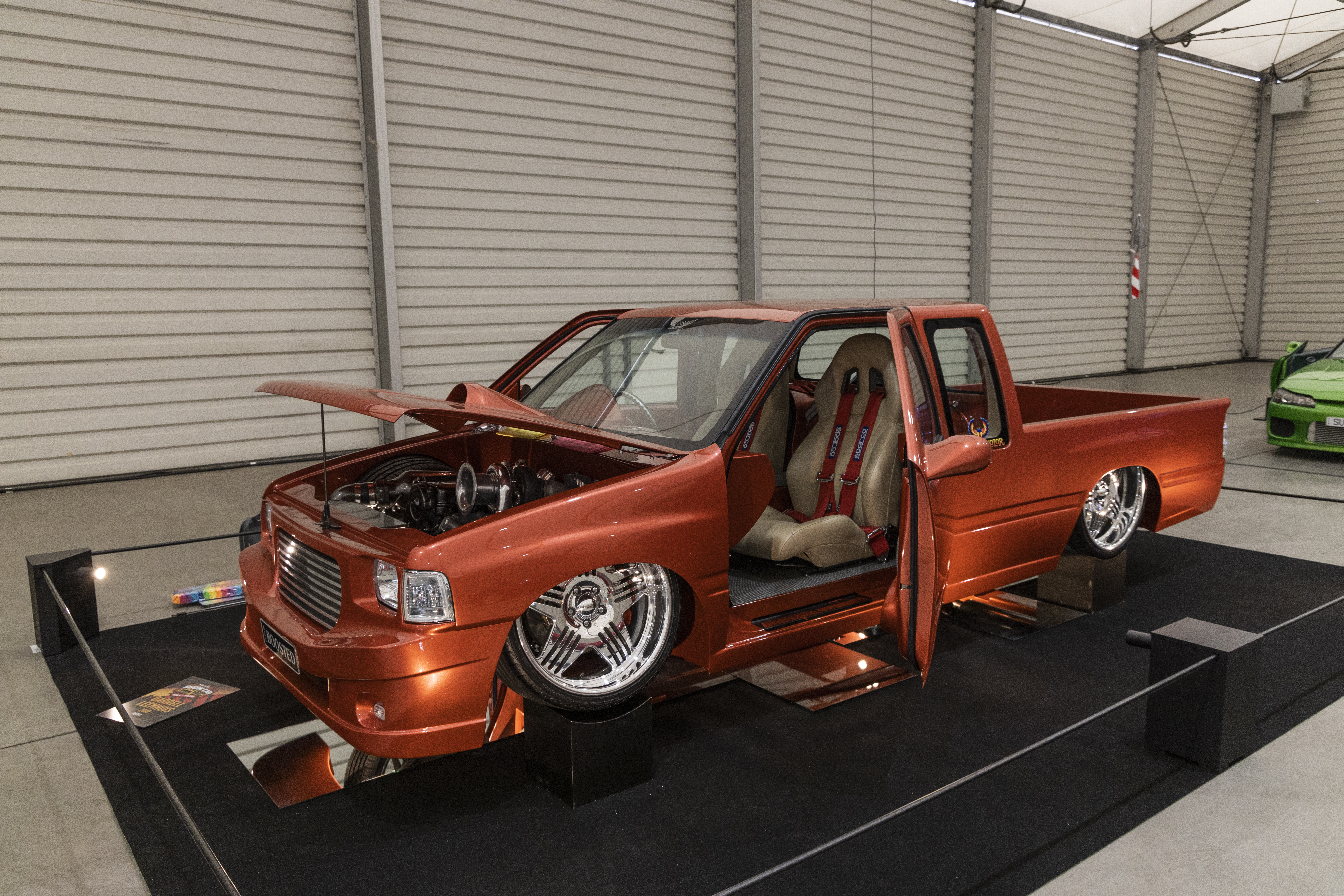
Darrell Leemhuis' 1990 Holden Rodeo Mini Truck, named BOOSTED,' was considerably ahead of its time. Built in the early 2000s, it went on to win Champion of the Decade at the 2010 Meguiar’s MotorEx and Grand Champion at Summernats 22. Despite being a bagged showstopper, the truck still produced over 300kW at the rear wheels. It made its debut at Meguiar's MotorEx in 2006 and underwent a six-year build. Darrell chose an impressive mix of three House of Kolor Reds and Galaxy Grey for the chassis. When it won the sword, it sported a new look with a salmon/rose gold paint scheme, which was showcased at that year's MotorEx.
2010: 23. Joe Lore
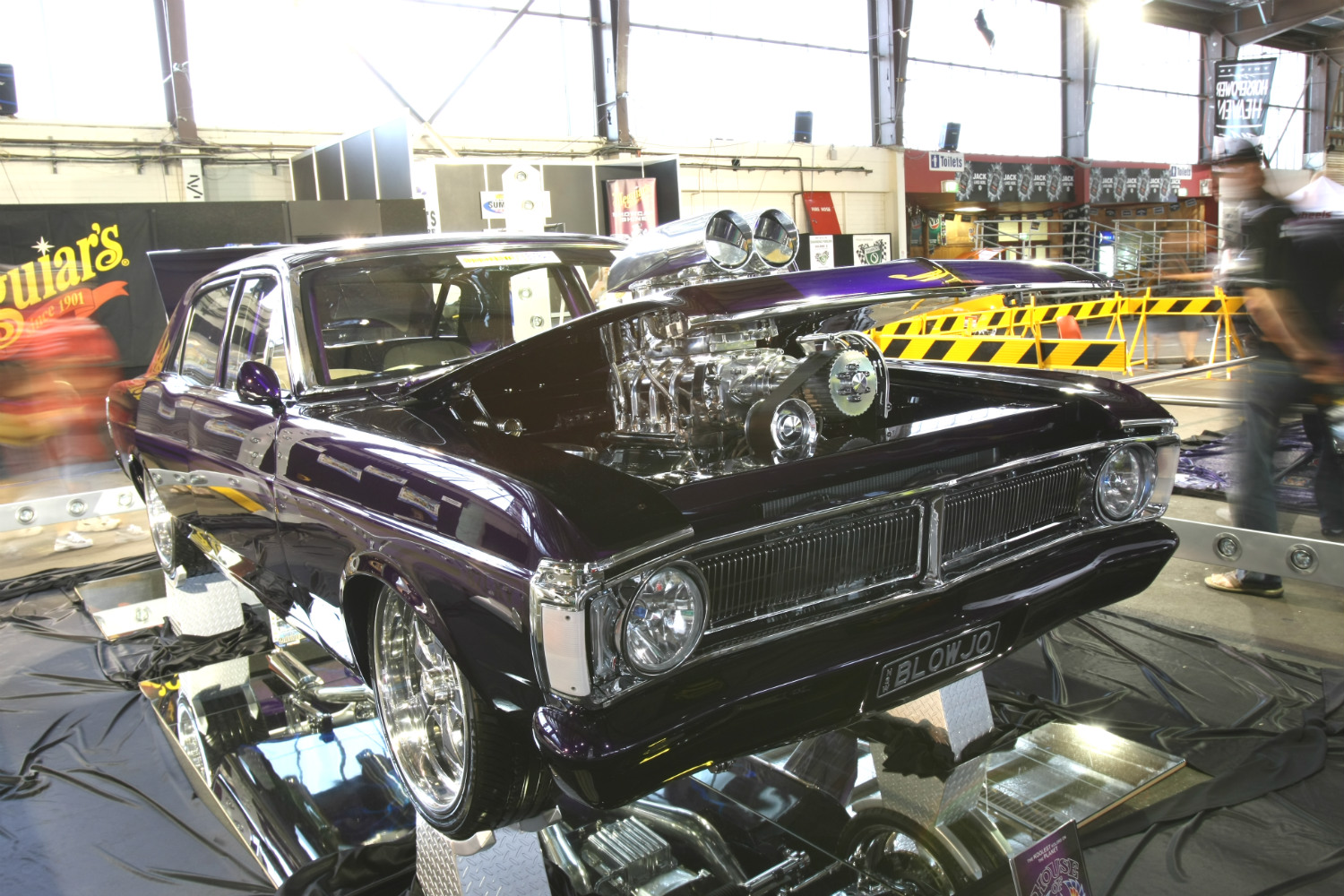
Joe Lore impressed with his build – a deep purple Ford XY Falcon finished in House of Kolor paint. Astonishingly, he completed this build in just nine months, which is a testament to the incredible work done on the car. Under the hood, it featured a 383ci Cleveland with an 8/71 blower and a touch of nitrous for good measure. The car's four-link setup looked fantastic around the custom finished floor complete with graphics. The graphics continued into the cabin, reaching all the way to a one-piece fiberglass roof lining above the roll-cage. Joe excelled in the driving events and truly deserved his victory.
2011: 24. Peter Fitzpatrick
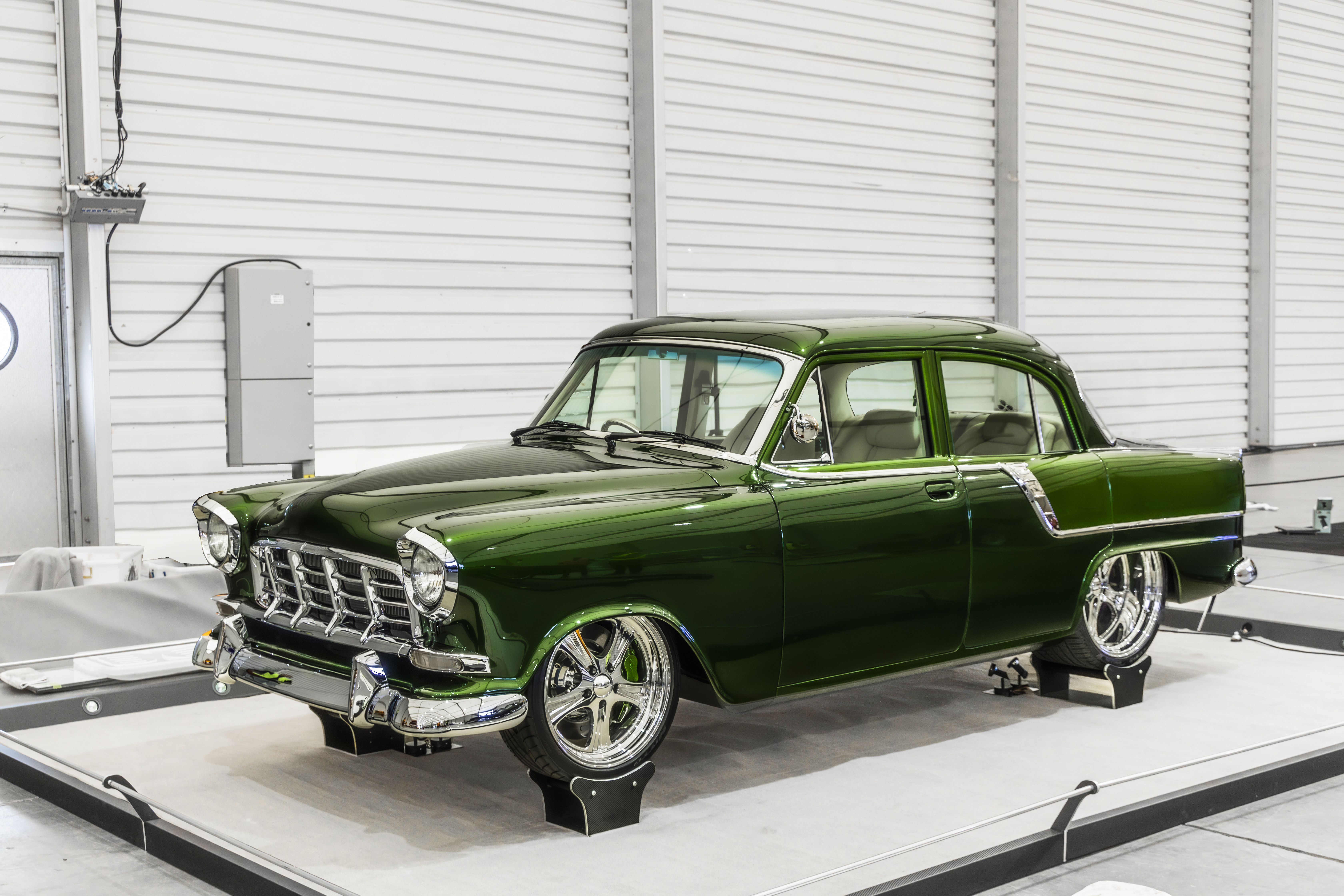
Peter Fitzpatrick returned with the third evolution of his FC Holden named 'Trilogy.' While retaining the two-toned look, he completely changed the colour to a custom House of Kolor urethane Kandy mix called 'Clover Green.' The new build involved a complete reimagining of the original powerplant that now featured a 440ci Chev with twin Garrett GT3540 turbos. Peter's talent was widely recognised, and he even received the Street Machine of the Decade award at MotorEx 2010. Fitzy had gone from a guy tinkering in his shed to one of the best-known car builders in the industry.
2012: 25. Ben Sargent
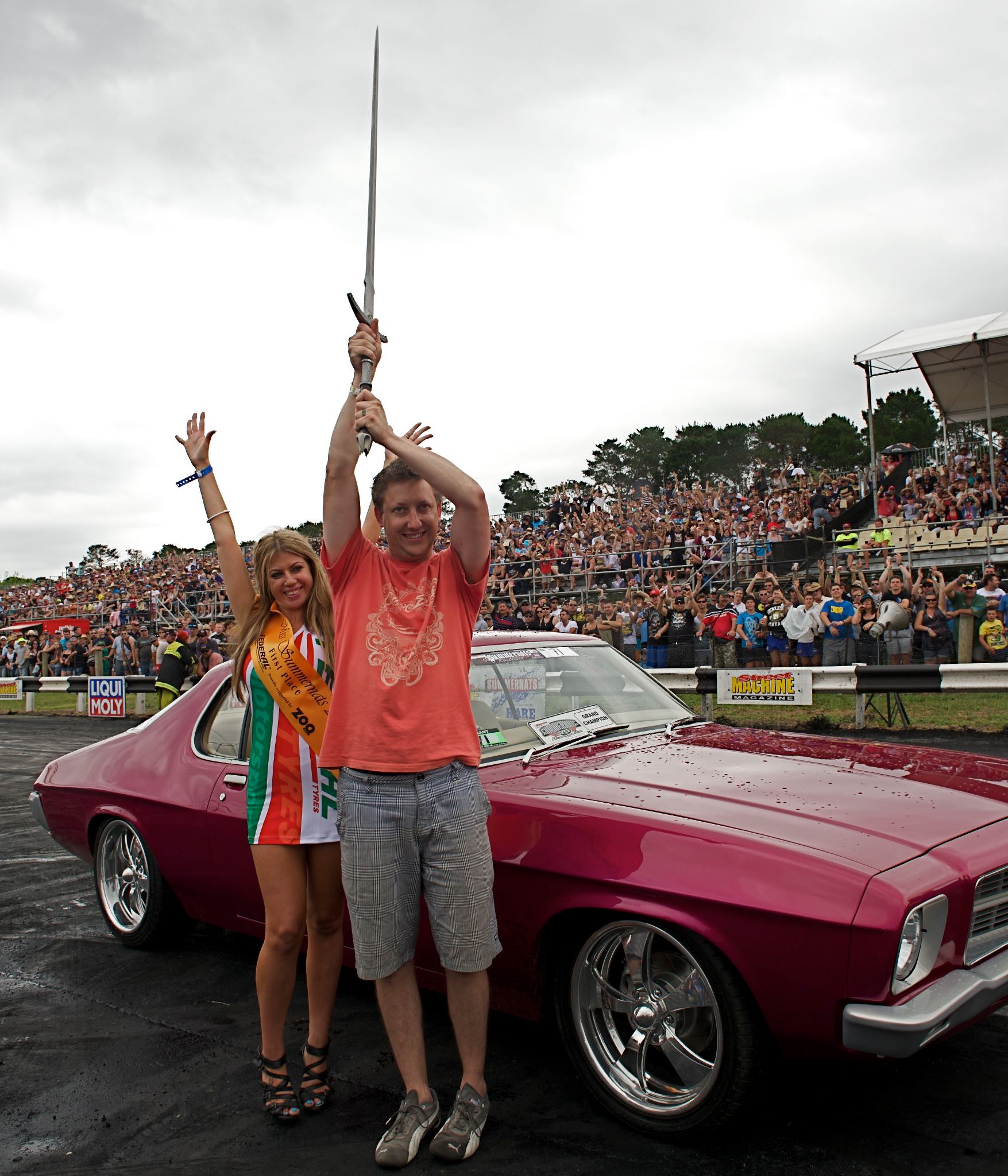
Ben Sargent dedicated numerous hours after work to prepare his 1971 HQ Monaro for his first Summernats experience. He attempted to win Grand Champ a couple of times before rebuilding the car for one last shot. The car was powered by a 308 engine with a TH400 transmission. Painted in a standout magenta colour with a prisma effect overlay, it garnered significant attention and won the People's Choice award. Ben's passion for Summernats extended to his entire family, with his kids never missing an event since birth, with the eldest now being over 19 years old.
2013: 26. Mick Fabar
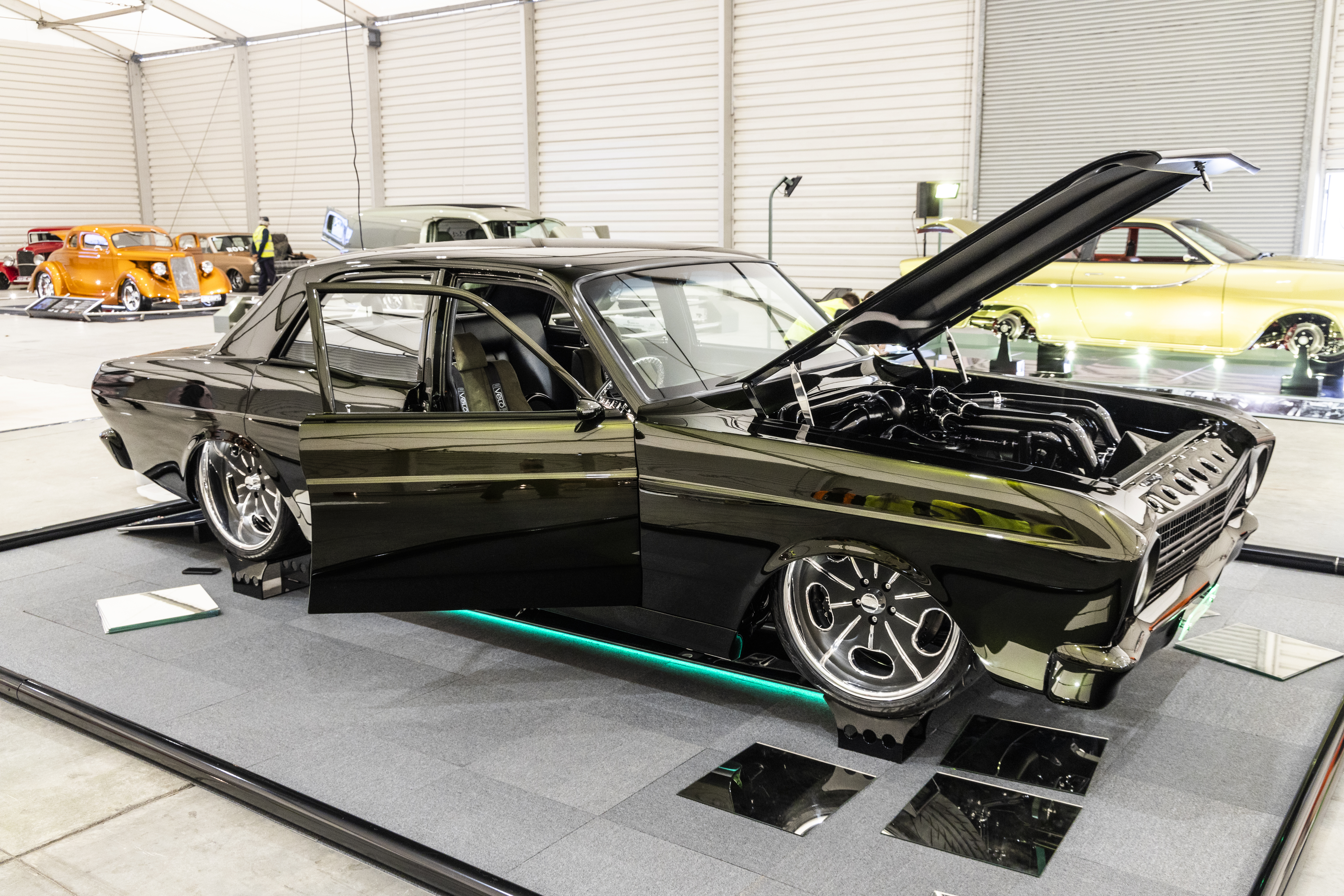
Mick Fabar, the owner of the award-winning building company 'Green Homes,' brought his XR Ford Falcon named 'ZEROD' to the event. With his company's focus on environmentally friendly construction, it's no surprise that his car followed suit. Mick opted for a House of Kolor Kandy mix to enhance the car's pumped body lines. The XR Falcon was powered by a Ford 7.3 Powerstroke Turbo-diesel engine, located behind a removable front clip. Mick's goal was to build a zero carbon emissions vehicle, and after 18 months of planning and seven months of intensive building, he achieved his objective. Mick won the Top Judged, People's Choice, and, of course, the sword at the event.
2014: 27. Henry Parry
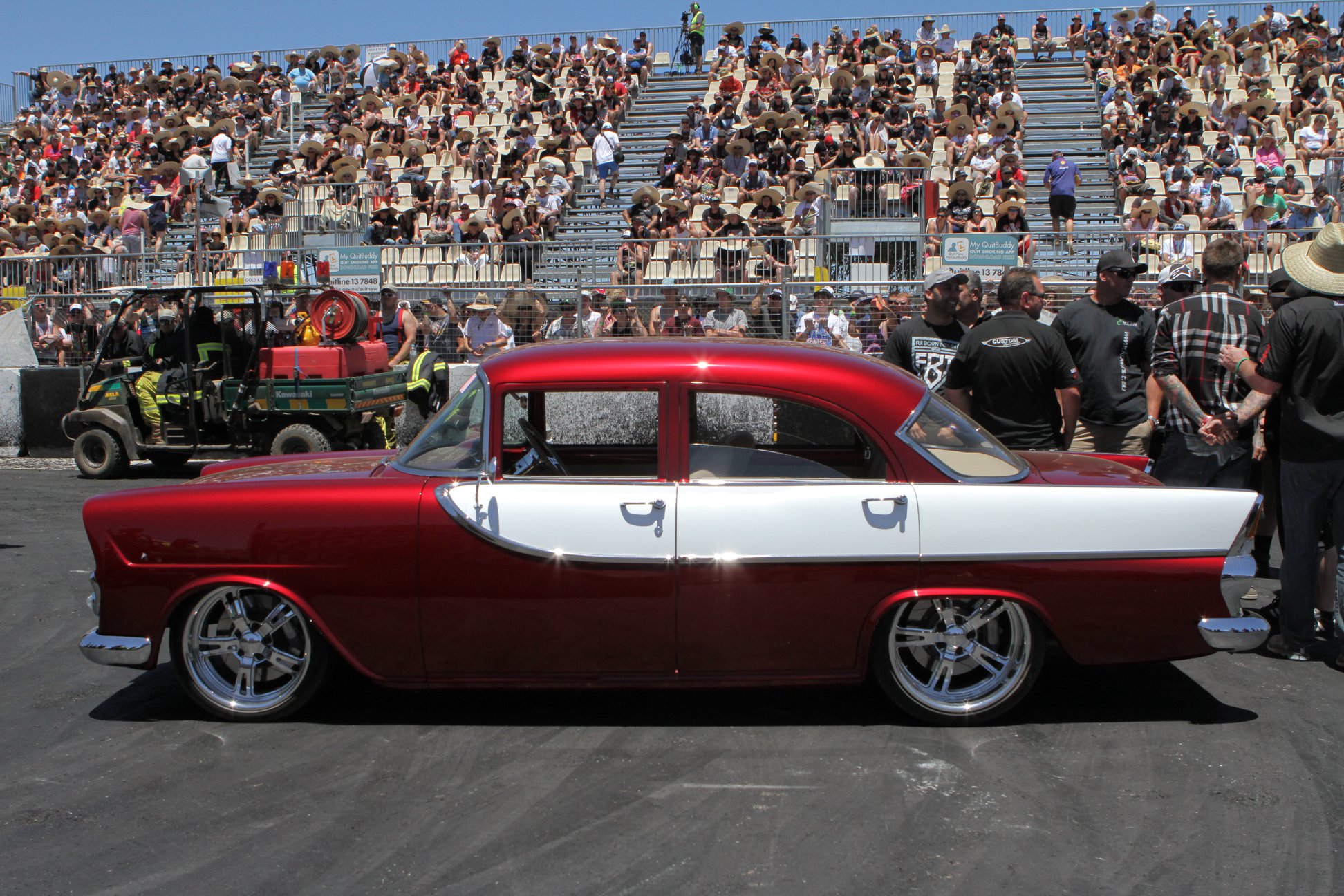
Henry Parry's 1961 FB Holden sedan, named 'OLDLOVE,' originally started as a regular old EK. After extensive modifications, it was transformed into a candy-apple red beauty with a white roof. The car featured a powerful LS1 engine nestled in a custom-built tubular chassis and four-link suspension. The Chop Shop NSW team handled the extensive fabrication work, which included deleting drip rails and quarter windows, and creating a custom grille. Despite the significant changes, the car retained its working air conditioning, power windows, and power locking. The interior received a complete makeover from the talented team at Stitched Up Trim. With a clear vision from the start, this car stood out and secured victory at the 27th Summernats.
2015: 28. Nathan Borg
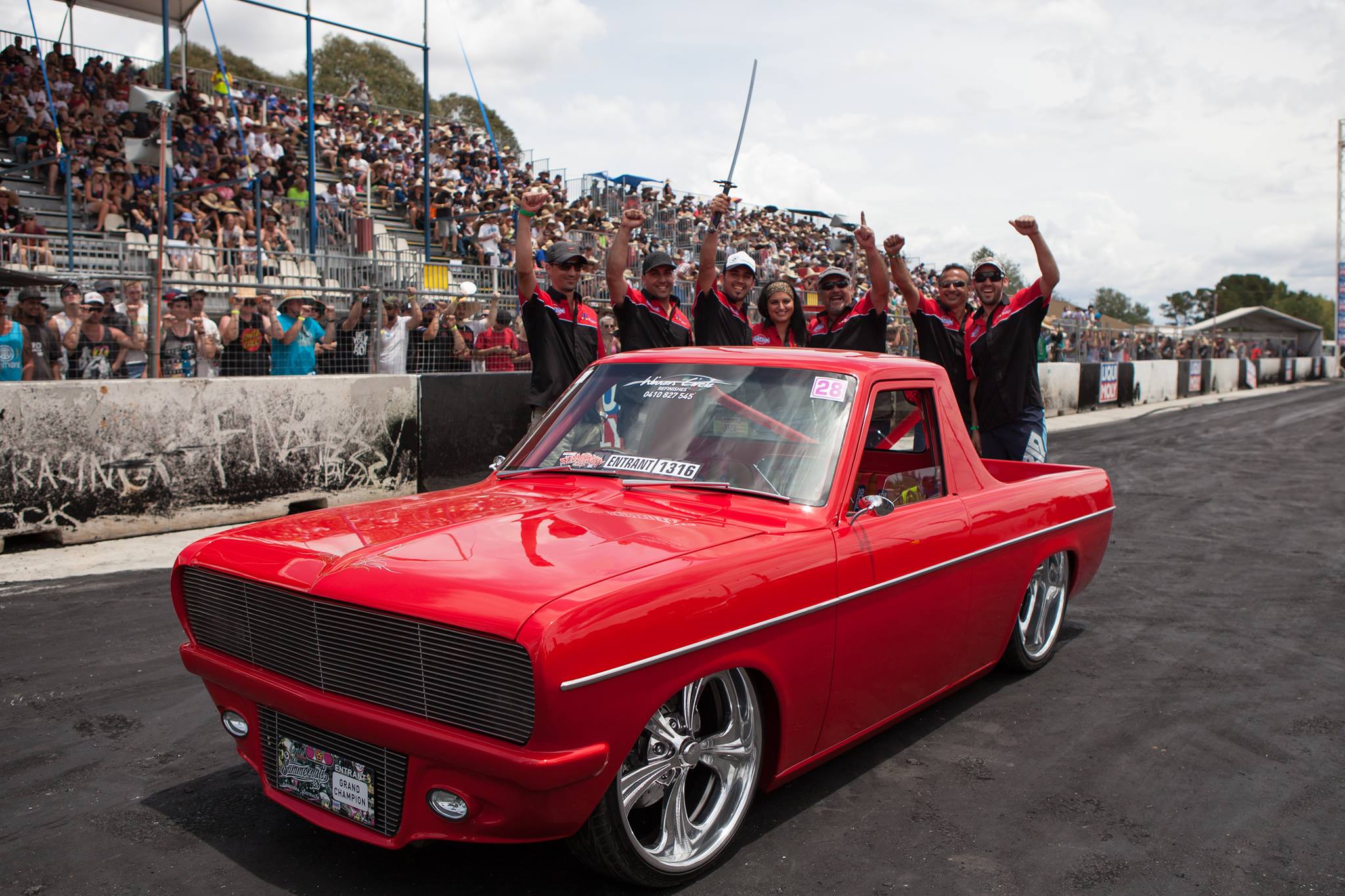
Nathan Borg made history by becoming the first-ever winner with a rotary-powered vehicle. His 1977 Datsun 1200 ute, built by SDR Motorsport, featured a powerful 13B turbo rotary engine. The car had previously debuted at MotorEx in 2013, where it captivated the audience. Painted in a striking House of Kolor solid bright red, it showcased the expertly fabricated bodywork. From top to bottom, the car boasted a glossy, wet-look finish that accentuated its massive set of wheels. Not only did Nathan win the prestigious sword, but he also took home the People's Choice award.
2016: 29. John Saad
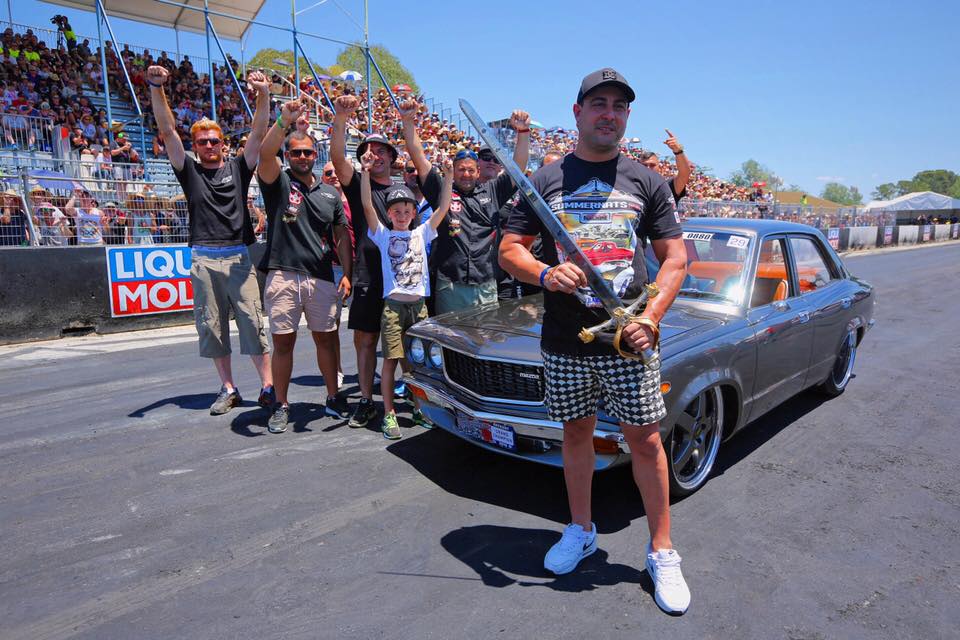
Returning for the second year, John Saad brought his elite-level Silver Mazda RX-3 named 'FATRX3' to Summernats. After finishing in the top three the previous year, he was determined to secure the grand championship. The car was equipped with a 13B Cosmo engine and C4 transmission, backed by a 9in rear end. This heavily modified Mazda combined stunning looks with impressive performance. John built the car to both showcase and drive, and he did enough on the Sunday of Summernats 29 to be considered a true grand champion.
2017: 30. Mark Williams
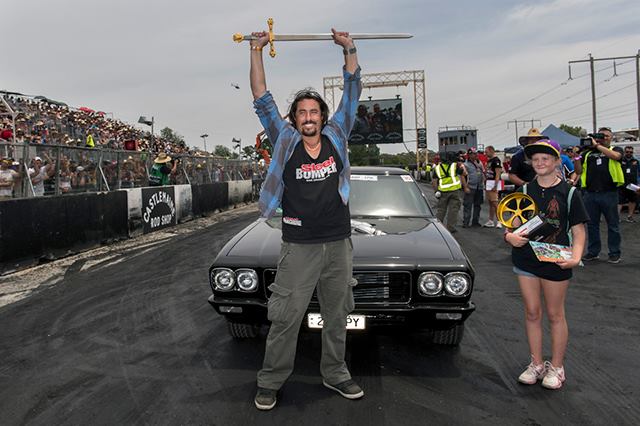
In 2017, Mark 'Happy' Williams emerged as the first winner from Western Australia. After a dedicated nine-year build, Mark's remarkable creation, a jet-black HQ Holden Tonner named '2HAPPY,' took the title. This tough and elite vehicle showcased its prowess in the driver skill events thanks to its ProCharged and intercooled 406ci small block Chevy engine. The car was built by Mark and his father Pete in their workshop, making the victory even more meaningful. Following his win, Mark had the opportunity to showcase his Tonner at the Red CentreNATS as an invitee. There, he unleashed its power in the burnouts, creating an unforgettable experience.
2018: 31. Grant Connor
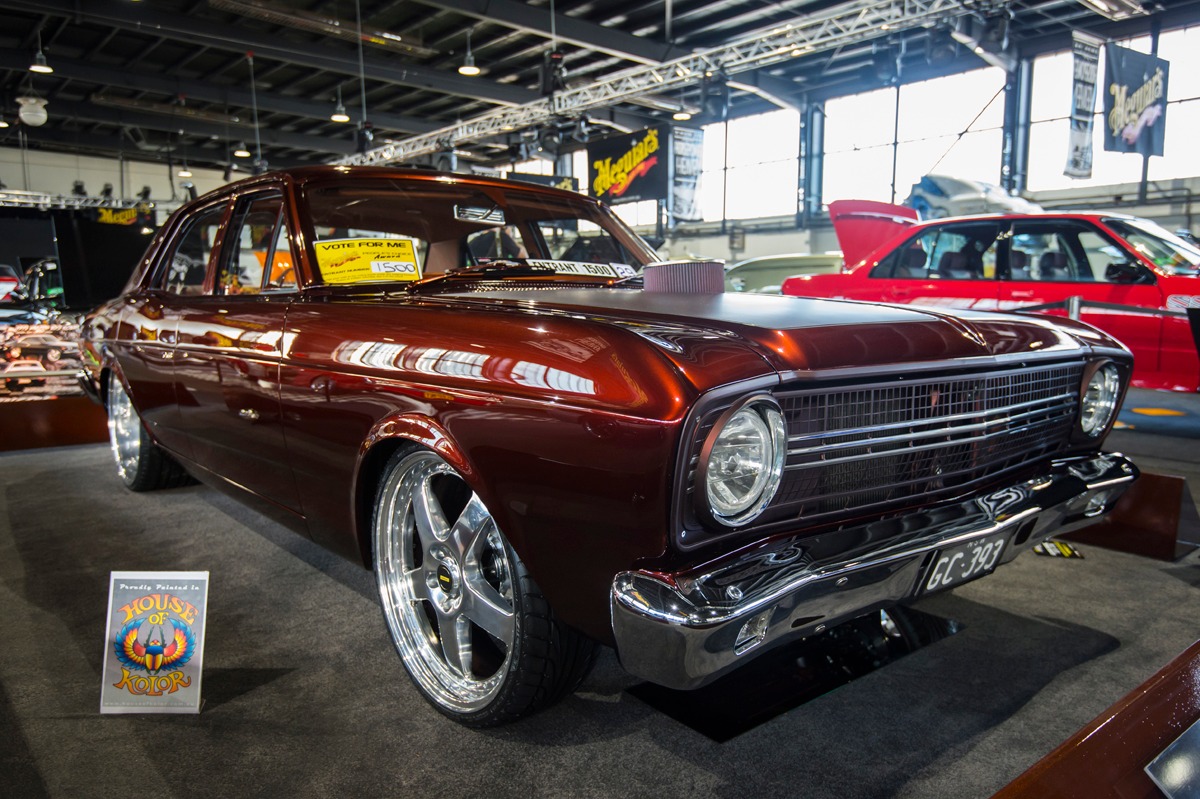
Grant Connor emerged victorious with his XR Ford Falcon named 'BAD APPLE' in a stunning House of Kolor Root Beer Kandy finish. The car had undergone several upgrades since its debut at Summernats 29, including a switch from a 393ci to a more powerful 434ci engine with a stronger C4 transmission. The rear of the car featured a four-link suspension and a 9in differential, while the tubbed rear housed a set of Copper Simmons wheels and upgraded Wilwood brakes. Grant faced tough competition from the previous year's grand champion, '2HAPPY,' and the battle came down to just a few points.
2019: 32. Rick Werner
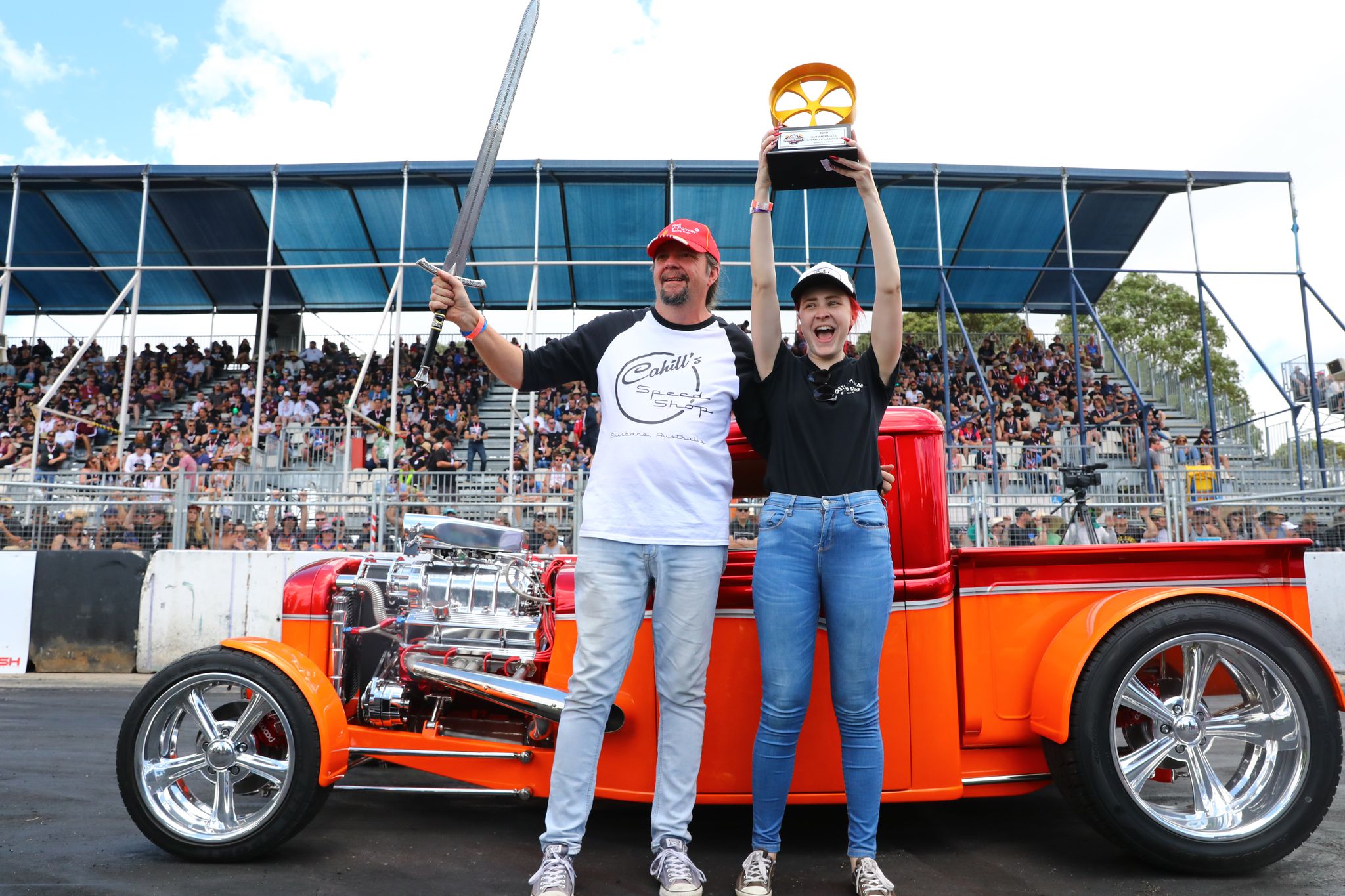
Rick Werner dominated the driving events with his 1932 Ford Pickup named 'Tequila Sunrise.' The previous year, Rick had missed out on the win due to a loose distributor during the same driving events. This two-toned HOK Kandy pocket-rocket was a joint effort between Rick and his daughter Danielle, who worked closely together to build the pickup over the years. The truck was powered by a 383ci stroked and supercharged small-block Chevy engine mated to a TH700 4-speed automatic transmission. Rick and Danielle proudly accepted the sword on the event pad.
2020: 33. Todd Sorensen
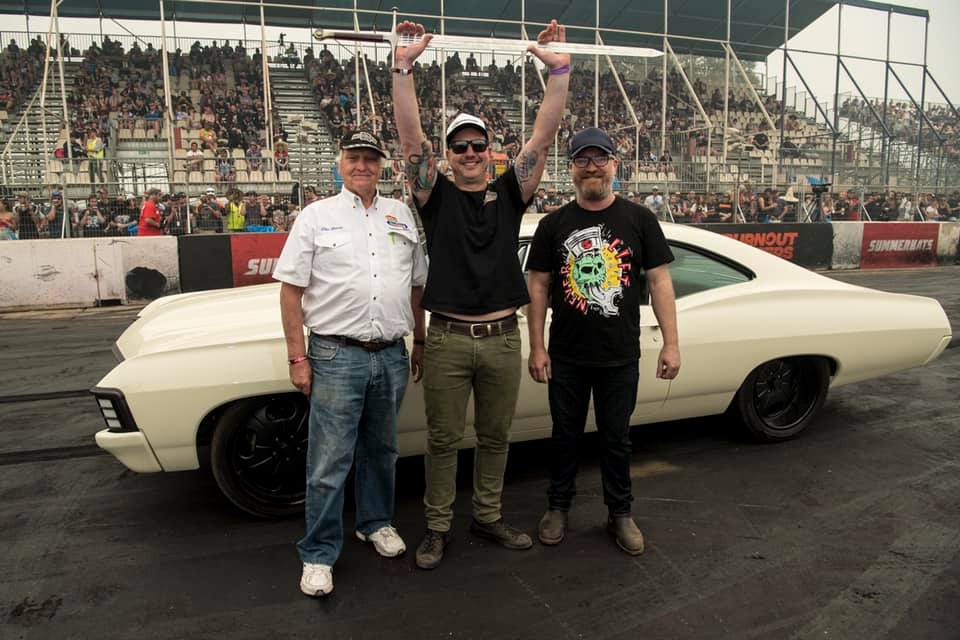
Todd Sorensen's 1967 Chevy Impala named 'Tribute' became one of the largest-bodied cars to win the grand champion sword. This impressive vehicle packed a massive 582ci engine producing over 736 horsepower. Todd, along with the team at Rock Solid Autobody, handled the bodywork and paint. The body lines were refined, and the front and rear bumpers were chopped and tucked for a flawless fit. Despite its solid PPG Vanilla gloss white paint job, the car wowed both the judges and spectators up close.
2022: 34. Jason Mansweto

The win in 2022 held a special significance for Jason Mansweto, as it was the last sword handed over by the late Chic Henry. Jason's XW, named '2ENIL8,' was highly praised by the judges, receiving accolades such as Master Craftsman, top 10, and People's Choice. This Pro Street build exemplified the highest standards of an elite/street elite car. The fabrication and modifications done to achieve a stock-looking four-door capable of running 7-second passes with large tires and a cage were truly remarkable. Jason had owned the car since he was 14 years old, and throughout the years, it underwent various transformations, making it a vehicle filled with memories.
2023: 35. Livi Krevatin
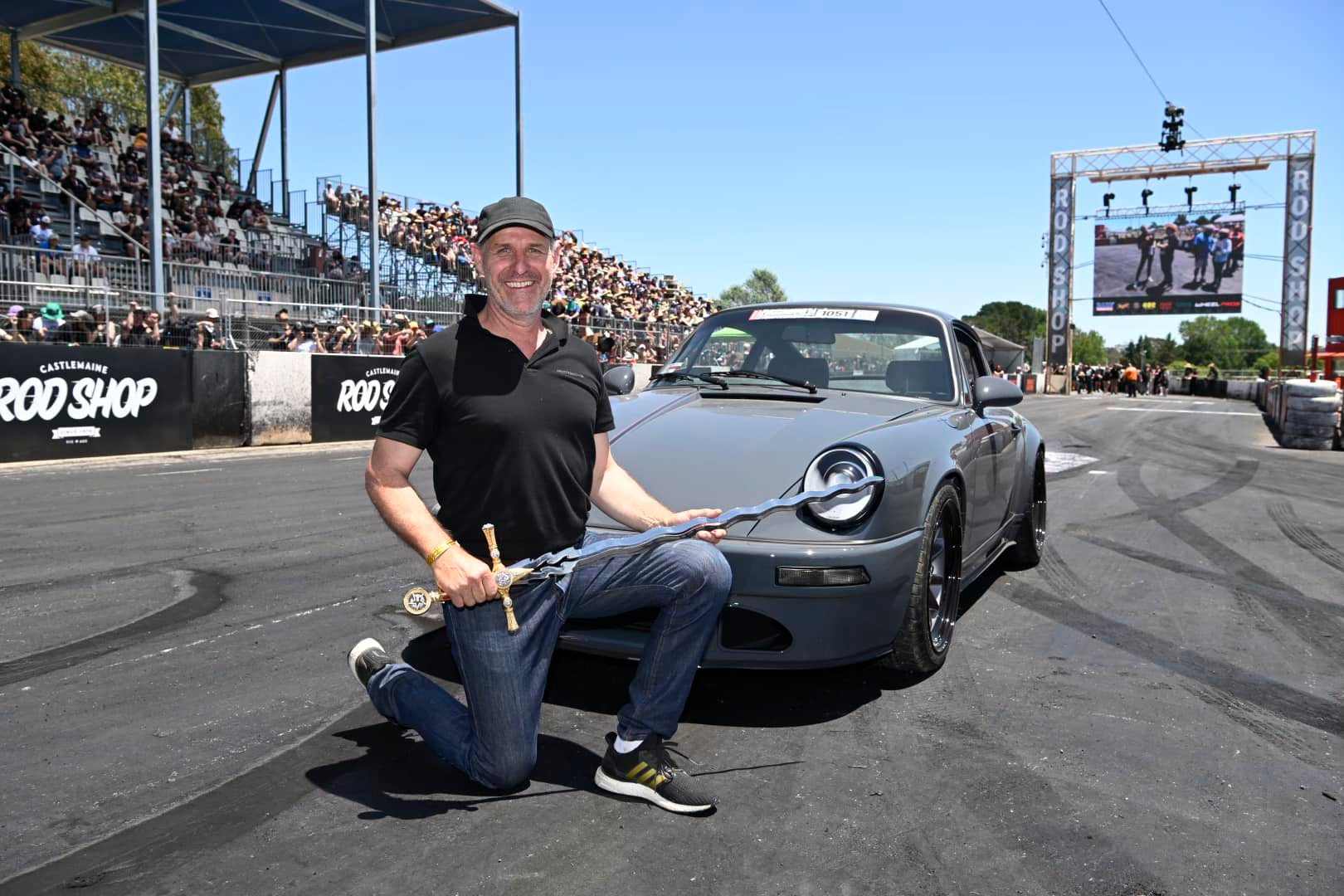
In 2023, the sword was awarded to Livi Krevatin for his 1978 Porsche 911 SC named 'DNA911.' This build was considered one of the most controversial to ever win Grand Champion due to its Euro roots. Nevertheless, the quality of the build, its popularity with the crowd, and it’s unmistakably excellent drivability were impossible to ignore. Unveiled the previous year at Meguiar’s MotorEx, the car stunned the crowd with its elite-level styling and extensive fabrication work. Despite appearing at first glance to be a stock 911, the level of customisation made it stand out as the perfect choice for the top award. The sword was handed to Livi by Chic Henry's granddaughter, Lauren Henry, in a special moment in front of the Chic Henry Grandstand. 'DNA911' has recently completed a 4000-kilometer round trip in Australia, arriving at MotorEx in the pouring rain where it remained parked outside for the duration of the show.
Reflecting on each of these incredible builds over the years and the competition they faced, it's evident how the industry and trends have evolved over time. What stands out even more is the strong sense of community and family involvement that has persisted throughout the years. This sense of community draws inspiration from the show that Chic Henry first created, and as the industry continues to grow and innovation escalates, we get to witness a diverse range of iconic builds in the chase for Grand Champion. From 4, 6 and 8-cylinder engines to rotaries, hot rods and more, Summernats remains the greatest motorsport festival in history. Summernats continues to adapt with the times and ensure fairness for all street machining enthusiasts no matter what they drive.
Comments
No posts found

